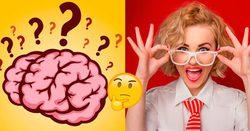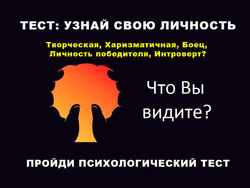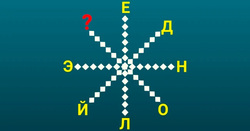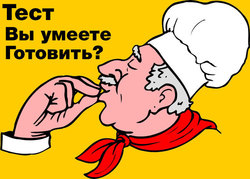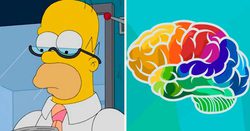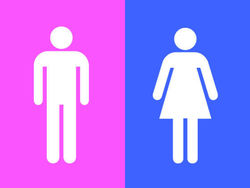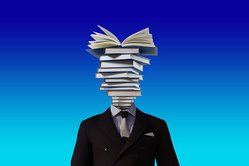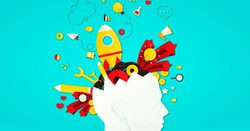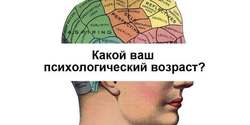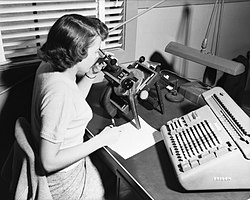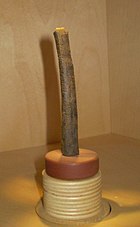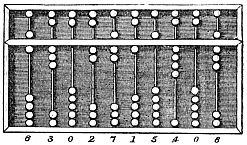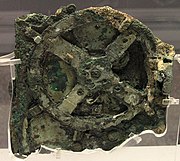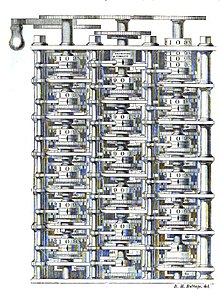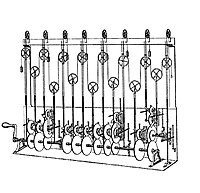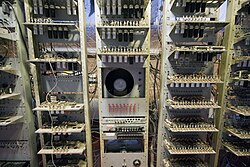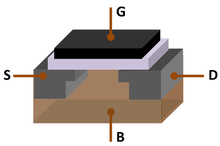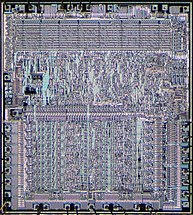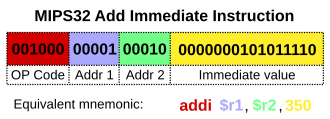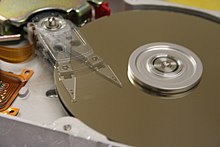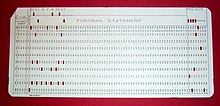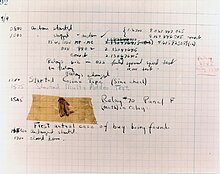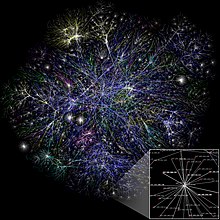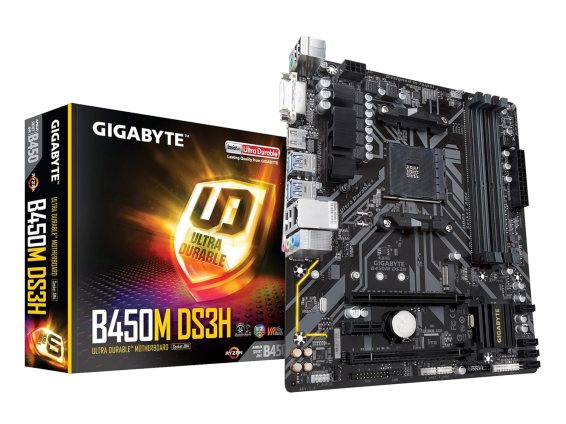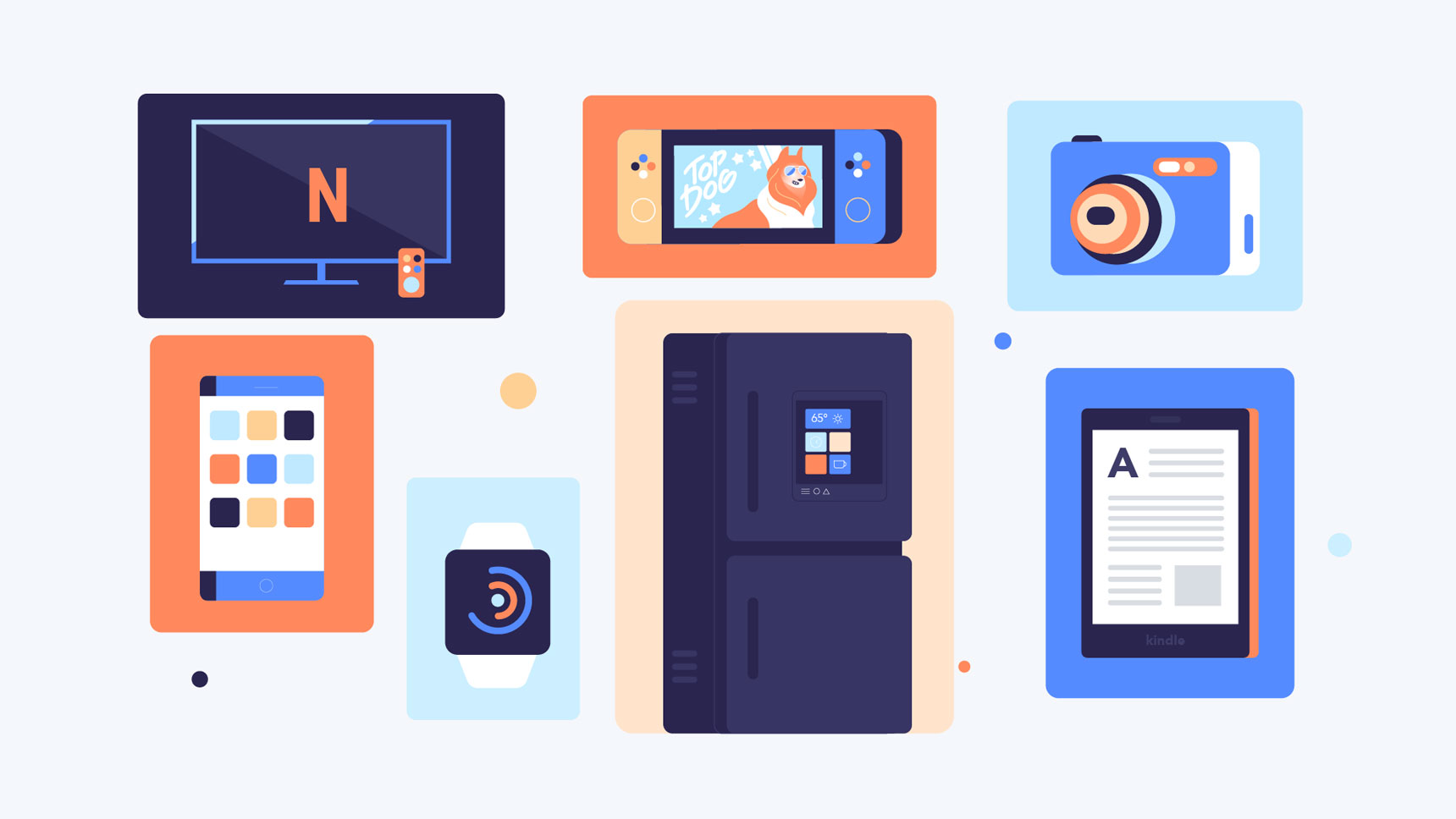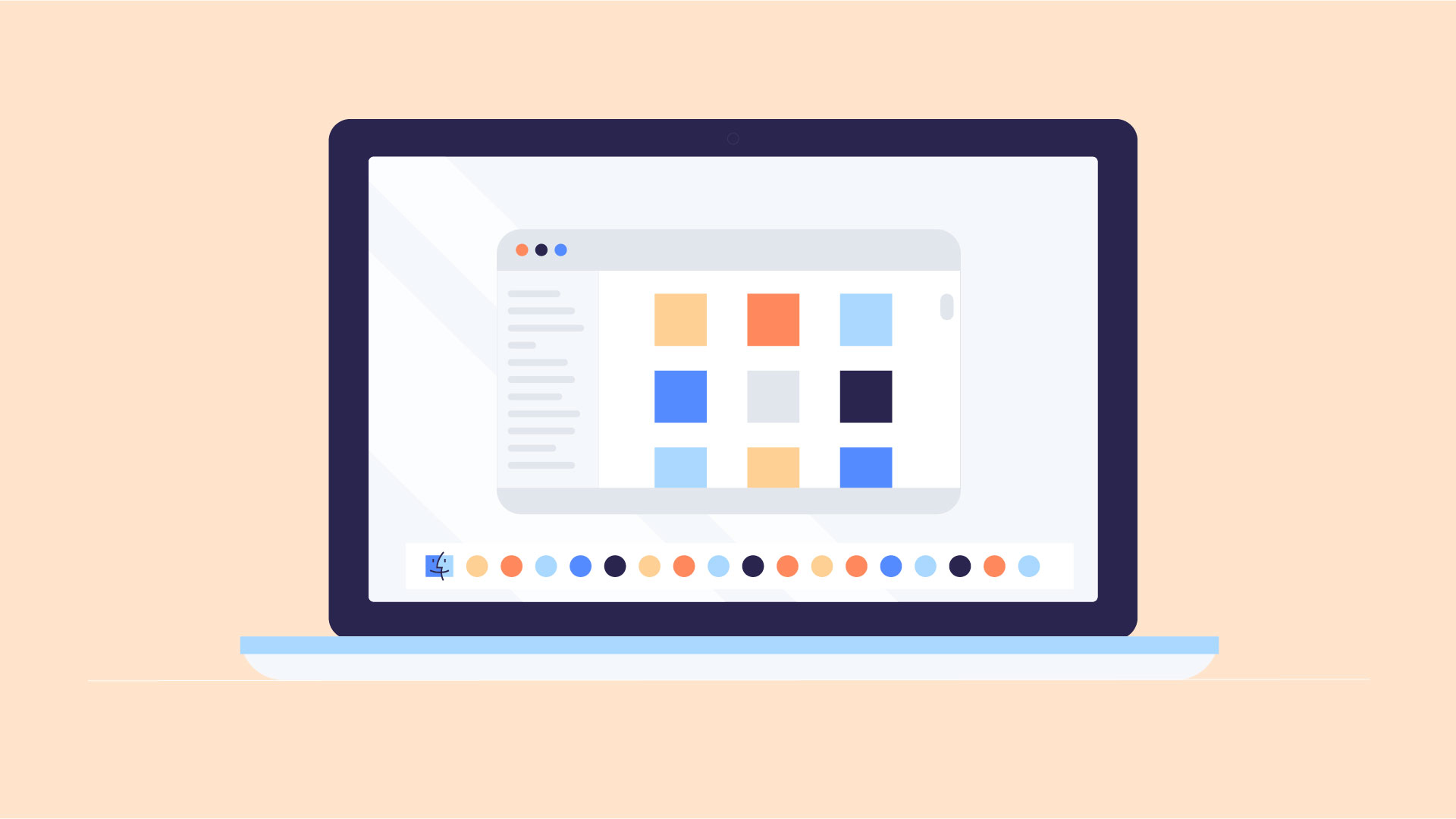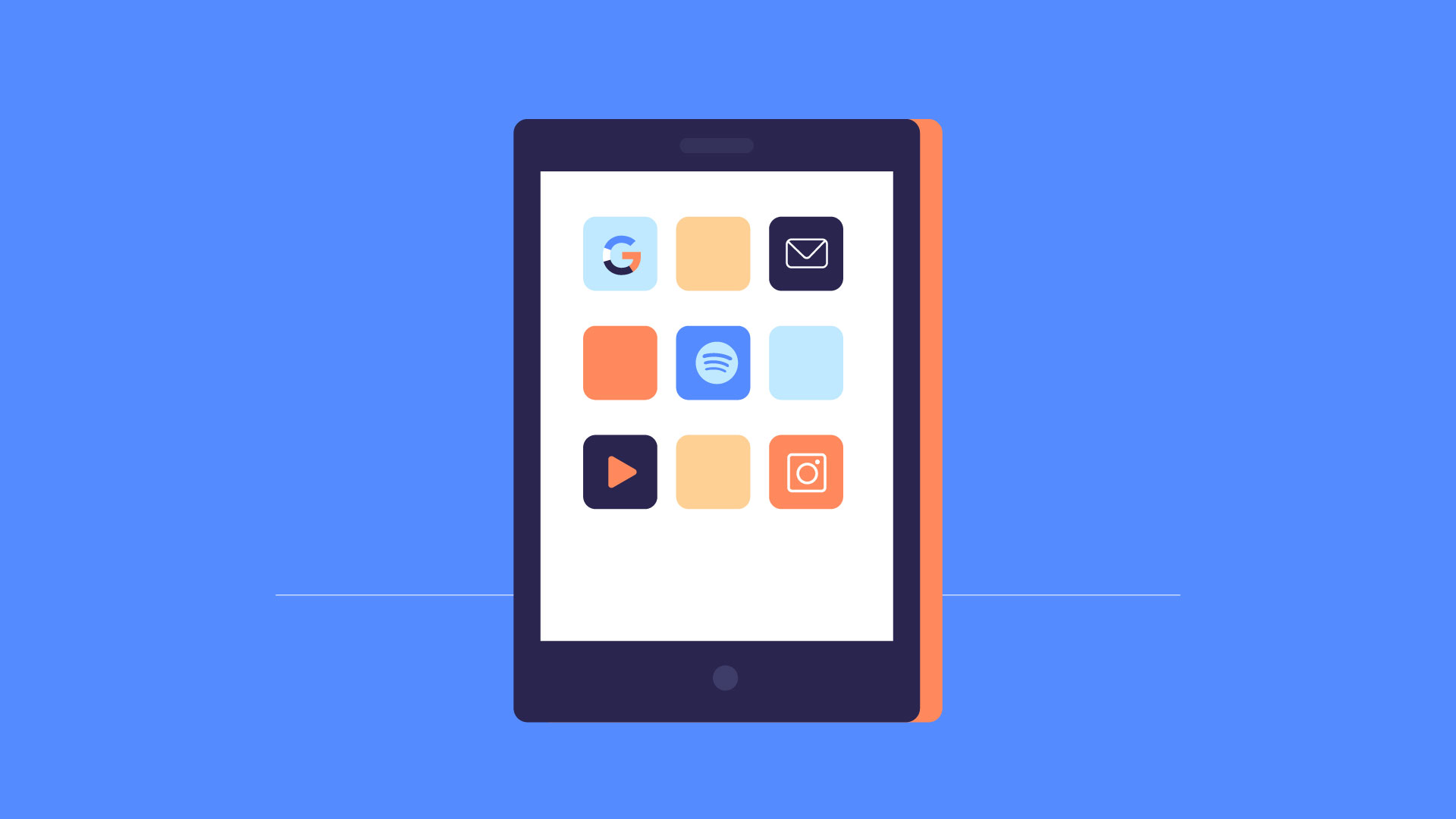ИКТ (ИНФОРМАТИКА)
для подготовки к сессии
Начало теста:
- <
- 1
- 2
- 3
- 4
- 5
- 6
- 7
- 8
- 9
- 10
- 11
- 12
- 13
- 14
- 15
- 16
- 17
- 18
- 19
- 20
- 21
- 22
- 23
- 24
- 25
- 26
- 27
- 28
- 29
- 30
- 31
- 32
- 33
- 34
- 35
- 36
- 37
- 38
- 39
- 40
- 41
- 42
- 43
- 44
- 45
- 46
- 47
- 48
- 49
- 50
- 51
- 52
- 53
- 54
- 55
- 56
- 57
- 58
- 59
- 60
- 61
- 62
- 63
- 64
- 65
- 66
1 *!Which number system is used in PC to create coding of data
Варианты ответов:
- *decimal
- *numerical
- *octal
- *binary
- *text
#2 *!The idea of program control on computing processes for the first time has been stated by
Варианты ответов:
- * J. Mauchli
- *Ch. Babbage
- * John Fon Neumann
- *Ada Lovelace
- *Norbert Wiener
#3 *!Byte is
Варианты ответов:
- * the tool of changing a letter code in RAM
- * information unit of quantity represented 1 or 0
- *the sequence from eight bits
- * a combination of four hexadecimal figures
- * it is the maximum unit of measure of amount of information
#4 *!In computer are stored
Варианты ответов:
- *multimedia
- *algorithms
- *elements
- *components
- *data
#5 *!According to this characteristics, information as a message should include all the relevant information
Варианты ответов:
- *accessibility
- *verifiability
- *completeness
- *adequacy
- *currency
#6 *!According to this characteristics, message must be verifiable so that its validity, accuracy, appropriateness can be assessed
Варианты ответов:
- *accessibility
- *verifiability
- *completeness
- *currency
- *adequacy
#7 *!According to this characteristics, information as a message should be reasonably or legally satisfy a requirement
Варианты ответов:
- *accessibility
- *currency
- *adequacy
- *completeness
- *verifiability
#8 *!According to this characteristics, the information should be timely available and it should not be obsolete as well
Варианты ответов:
- *completeness
- *currency
- *accessibility
- *adequacy
- *verifiability
#9 *!Characteristics of information which striving to reduce or eliminate biases, subjective evaluations by relying on verifiable data
Варианты ответов:
- *objectivity
- *currency
- *adequacy
- *verifiability
- *accessibility
#10 *!Data processing which is used for ordering data
Варианты ответов:
- *transportation of data
- *archiving of data
- *filtration of data
- *formalization of data
- *sorting of data
#11 *!Data processing which is used to compressing data
Варианты ответов:
- *archiving of data
- *transportation of data
- *filtration of data
- *sorting of data
- *formalization of data
#12 *! The maximum number in which no more than 8 bits of information are included
Варианты ответов:
- *2048
- *1024
- *512
- *256
- *4096
#13 *! Binary equivalent of decimal number 42
Варианты ответов:
- *0101011
- *11101001
- *101010
- *1010101
- *1100111
#14 *!Types of magnetic storage
Варианты ответов:
- *input and output
- *empty and filled
- *complex and simple
- *firm and soft
- *floppy and hard
#15 *!For acceleration of access to random access memory it is used
Варианты ответов:
- *additional memory
- *cash memory
- *video memory
- *random access memory
- *semipermanent memory
#16 *!Constant memory of BIOS is used for
Варианты ответов:
- *storage of text data
- *initiation of loading of OS
- *checking of loading sector
- *checking of the hard drive volume
- *checking of the computer equipment
#17 *!He has offered computer organization
Варианты ответов:
- *Norbert Wiener
- *Ada Lovelace
- *N. I. Vavilov
- *George Boole
- *John von Neumann
#18 *!The modem and the fax-modem are used for
Варианты ответов:
- *connections to satellite communication
- *effective work with office equipment
- *conversation with users
- *exchanging information with other computers
- *information output on paper or on computer
#19 *!Core speed
Варианты ответов:
- *memory size
- *microprocessor speed
- *information transfer speed
- *volume of disk memory
- *computer sizes
#20 *!Random Аccess Мemory is
Варианты ответов:
- *semi permanent memory
- *video memory
- *cash memory
- *the constant memory
- *operative memory
#21 *!Hardware is
Варианты ответов:
- *compact disk
- *computer configuration
- *software
- *hard drive
- *information support
#22 *!The streamer is intended for
Варианты ответов:
- *exchange of information with other computers
- *fast saving of information in the hard drive
- *output of drawings to paper
- *reading of graphic and text information
- *simplification of input of information in the computer
#23 *!The central processor serves for
Варианты ответов:
- *storage of information
- *visual representation of data
- *calculations and information processing
- *information output
- *input of information
#24 *!Hard drive is
Варианты ответов:
- *zip disk
- *high capacity integral disk
- *high capacity floopy disk
- *the device of input-output for floopy discs
- *input/output
#25 *!Operative memory is
Варианты ответов:
- *device for direct perception of the information to the person
- *information containing on a hard disk
- *device for long storage of the information on magnetic disks or magnetic tapes
- *device which addresses regularly to machine during performance of operations
- *information containing on a floppy disk
#26 *!Video memory is used for
Варианты ответов:
- *storage of images which are displayed on the screen
- *storage of text data
- *storage of programs which check computer equipment
- *checking of loading sector
- *storage of computer configuration parameters
#27 *!Plotter is used for
Варианты ответов:
- *printing text
- *reading information fro computer
- *exchanging information with other computers
- *quickly saving information located on hard disk
- *printing graphs and pictures
#28 *!In word «INFORMATICS» there are
Варианты ответов:
- *44 bits
- *80 bytes
- *88 bits
- *11 bits
- *88 bytes
#29 *!In word «COMPUTER» there are
Варианты ответов:
- *8 bytes
- *64 bytes
- *10 bytes
- *12 bytes
- *80 bytes
#30 *!In 32 Gbytes there are
Варианты ответов:
- *32000 bytes
- *224 bytes
- *2 35 bytes
- *222 bytes
- *2 20 bytes
#31 *!Convert binary number 1001 into decimal system
Варианты ответов:
- *1
- *510
- *8
- *9
- *7
#32 *!Multiplication of binary numbers 1011 and 110
Варианты ответов:
- *0011100
- *0100000
- *1000010
- *1000000
- *0000100
#33 *!Convert hexadecimal number 255 into decimal system
Варианты ответов:
- *531
- *211
- *343
- *333
- *597
#34 *!Decimal number 2 in binary system is written as
Варианты ответов:
- *01
- *1001
- *1111
- *11
- *10
#35 *!The sum of binary numbers 111011+101010 is equal to
Варианты ответов:
- *1100111
- *0011011
- *0101100
- *0111100
- *1100101
#36 *!The multiplication of binary numbers 110 and 111
Варианты ответов:
- *111000
- *111100
- *101010
- *101100
- *101110
#37 *!Why is mathematical coprocessor necessary
Варианты ответов:
- *printing information
- *to help to basic processor in performance of mathematical operations
- *permanent storage of the information which is used at work in a computer
- *for recording data on cd
- *reading of the information
#39 *!Second generation computers used value technology as
Варианты ответов:
- *large scale integration chips
- *integrated circuit chips
- *vacuum tubes
- *microcircuits
- *transistors
#40 *!Order of switching off of the computer
Варианты ответов:
- *system unit, monitor, printer
- *system unit, printer, monitor
- *printer, system unit
- *monitor, printer, system unit
- *system unit, monitor
#41 *!Logical elements of a computer
Варианты ответов:
- *monitor, printer, decoder
- *adder, trigger, counter, coder, decoder
- *hardware and software
- *monitor, printer, scanner, streamer
- *scanner, streamer, triggers, decoder, adder
#81 *!MS Windows. The Windows Explorer consists of two panels
Варианты ответов:
- *list, contents
- *table, list
- *shortcut, labels, list
- *shortcut, table
- *labels, tile
#82 *!MS Windows. Ways of copying objects
Варианты ответов:
- *horizontal menu, system menu
- *task panel, my computer, horizontal menu, context menu
- *task area, horizontal menu, main menu
- *system menu, main menu
- *horizontal menu, Drag@drop mechanism, context menu
#83 *!MS Windows. The main elements of the window
Варианты ответов:
- *menu bar, tool bar, work area, desktop, recycle bin
- *menu bar, tool bar, recycle bin
- *desktop, recycle bin, scroll bar, work area
- *tool bar, work area, desktop, recycle bin
- *title bar, menu bar, tool bar, work area
#84 *!MS Windows. Admissible operations with file structure
Варианты ответов:
- *creating of tool bar
- *creating of files, creating of ехе-files
- *creating of folders, creating of shortcuts
- *creating of scroll bar, re-formatting of files
- *creating of ехе-files, scanning of files
#85 *!MS Windows. Templates of file names are given via special symbols
Варианты ответов:
- *brackets and fractions
- *exclamatory and interrogative signs
- *square brackets and equal-signs
- *quotes and asterisks
- *asterisk and interrogative sign
#86 *!Loading of MS Word program
Варианты ответов:
- *system menu — MS Word
- *start — programs — MS Office — MS Word
- *open the current folder and double click on any label
- *context menu — MS Word
- *Office button
#87 *!MS Word. Status bar on main window is located
Варианты ответов:
- *on the bottom part of the document
- *in the dialog box of navigation
- *on the top part of the window
- *on the ribbon
- *on the tool bar
#88 *!MS Word. On the tab page layout there are commands, intended for
Варианты ответов:
- *a choice of various modes of viewing of the document
- *spellings, addition of comments and protection of the document
- *inclusions in the text of references and their editing
- *creations and changes of a marking of pages of the document
- *inclusions of tables in the text of the document
#89 *!MS Word. A set of the commands grouped in a certain place of the screen called to
Варианты ответов:
- *button
- *group
- *tab
- *command
- *ribbon
#90 *!MS Word. Header is located
Варианты ответов:
- *on the title bar of the window
- *on status bar
- *in arbitrary order of the page
- *on the desktop
- *on the bottom (top) side of the page
#91 *!MS Word. What kind of underline appears below the word if you type a word that is not in word’s dictionary
Варианты ответов:
- *black
- *red
- *blue
- *green
- *grey
#92 *!MS Word. The ____ bar presents information about the document, the progress of current tasks, and provides controls for viewing the document
Варианты ответов:
- *status
- *control
- *scroll
- *space
- *menu
#93 *!MS Word. The ____ feature in word allows you to type continually without pressing the enter key at the end of each line
Варианты ответов:
- *wordwrap
- *overtype
- *textwrap
- *click and type
- *view
#94 *!MS Word. Transition of the cursor to the beginning of the document
Варианты ответов:
- *PageUp
- *PageDown
- *Print Screen+Alt
- *Ctrl+Home
- *Ctrl+H
#95 *!MS Word. If existing text moves to the right with new text as you type, you are probably in ____ mode
Варианты ответов:
- *textwrap
- *typeover
- *insert
- *overtype
- *moveover
*!MS Word. A saved document is referred to as a ____
Варианты ответов:
- *book
- *project
- *word
- *file
- *theme
#97 *!MS Word. The process of changing the appearance of a paragraph is called paragraph
Варианты ответов:
- *adjusting
- *viewing
- *formatting
- *editing
- *changing
#98 *!MS Word. When your fingers are already on the keyboard, it is sometimes more efficient to use ____ to format text
Варианты ответов:
- *the formatting toolbar
- *the menu bar
- *shortcut keys
- *the mouse
- *function keys
#99 *!MS Word. To find a synonym, click the thesaurus on the ____ tab
Варианты ответов:
- *thesaurus
- *review
- *dictionary
- *format
- *home
#100 *!MS Excel. For construction of schedules and drawing up of formulas it is necessary to use the master
Варианты ответов:
- *diagrams
- *forms
- *drawing
- *functions
- *reports
#101 *!MS Excel. The document created in Excel, is called
Варианты ответов:
- *document
- *sheet
- *file
- *spreadsheet
- *workbook
#102 *!MS Excel. Each worksheet has a sheet name that appears on a(n) ____ at the bottom of the workbook
Варианты ответов:
- *status bar
- *sheet tab
- *title tab
- *active tab
- *name indicator
#103 *!MS Excel. Each worksheet in a workbook has ____ rows
Варианты ответов:
- *1046756
- *65536
- *327675
- *1048576
- *100
#104 *!MS Excel. The ____, located near the top of the excel window, is the control center in excel
Варианты ответов:
- *home tab
- *ribbon
- *control bar
- *status bar
- *mode bar
#105 *!MS Excel. The number of worksheets that you can add to a workbook is
Варианты ответов:
- *Limited by the amount of memory on the computer
- *1067456
- *100
- *65536
- *256
#106 *!MS Excel. The ____ on a worksheet is one in which you can enter data
Варианты ответов:
- *reference cell
- *active cell
- *home cell
- *cell
- *absolute cell
Идет подсчет результатов
11
Сообщить о нарушение
Ваше сообщение отправлено, мы постараемся разобраться в ближайшее время.
Отправить сообщение
5 357 просмотров
Верно 3 / С ошибками 457
- 0
- 0
Популярные тесты
-
Какое имя подходит вам по знаку зодиака
HTML-код
АндрейКоличество прохождений: 379 074
538 023 просмотров — 14 августа 2019
Пройти тест -
Сможете ответить на вопросы на общие знания, в которых стыдно сделать ошибку?
HTML-код
АндрейКоличество прохождений: 315 994
527 560 просмотров — 24 декабря 2018
Пройти тест -
Если закончите цитаты из советских фильмов на 10/10, то вы наверняка родились в СССР
HTML-код
АндрейКоличество прохождений: 328 402
455 585 просмотров — 22 июля 2022
Пройти тест -
Насколько уникальна ваша личность?
HTML-код
Никитин КонстантинКоличество прохождений: 458 097
708 798 просмотров — 26 декабря 2016
Пройти тест -
Тест на интеллект: Если наберете 9/9, то уровень вашего IQ точно выше среднего
HTML-код
АндрейКоличество прохождений: 876 153
1 745 998 просмотров — 16 ноября 2019
Пройти тест -
Умеете ли вы готовить? Сложный кулинарный Блиц-тест ресторатора Ивана Шишкина
HTML-код
АдминистраторКоличество прохождений: 302 524
615 318 просмотров — 01 декабря 2016
Пройти тест -
Цветовой тест: попробуем отгадать ваш возраст всего за 9 вопросов
HTML-код
АндрейКоличество прохождений: 313 032
568 034 просмотров — 07 августа 2019
Пройти тест -
Если сможете закончить 13 крылатых фраз, то вы настоящий интеллигент
HTML-код
АндрейКоличество прохождений: 643 580
1 032 589 просмотров — 18 августа 2019
Пройти тест -
У вас должно быть как минимум два образования, чтобы пройти этот тест хотя бы на 9/12
HTML-код
АндрейКоличество прохождений: 484 397
935 331 просмотров — 12 февраля 2019
Пройти тест -
Непростой тест на общие знания: Пройдете его хотя бы на 7/10?
HTML-код
АндрейКоличество прохождений: 729 800
1 241 966 просмотров — 31 января 2019
Пройти тест -
Тест на общие знания, который по зубам не каждому
HTML-код
АндрейКоличество прохождений: 479 875
784 053 просмотров — 22 февраля 2019
Пройти тест -
Сможем ли мы определить ваш пол, узнав, что вы ненавидите?
HTML-код
Никитин КонстантинКоличество прохождений: 341 230
517 066 просмотров — 20 декабря 2016
Пройти тест -
Тест на широкий кругозор: сможете ли вы ответить хотя бы на половину вопросов?
HTML-код
АндрейКоличество прохождений: 548 819
1 084 304 просмотров — 28 февраля 2019
Пройти тест -
Сможем ли мы угадать ваш возраст, задав вам 5 вопросов?
HTML-код
Никитин КонстантинКоличество прохождений: 601 928
837 488 просмотров — 20 декабря 2016
Пройти тест -
Вы точно профессор, если наберете в нашем сложном тесте 10/10 — ТЕСТ
HTML-код
АннаКоличество прохождений: 338 020
525 799 просмотров — 21 марта 2020
Пройти тест -
А вы сможете продолжить эти 13 крылатых фраз?
HTML-код
ВладленаКоличество прохождений: 472 440
742 343 просмотров — 31 марта 2020
Пройти тест -
Не называйте себя эрудированным человеком, если не сможете набрать в этом тесте хотя бы 8/10
HTML-код
АндрейКоличество прохождений: 382 945
641 495 просмотров — 29 января 2019
Пройти тест -
Тест на общие знания: Просвещены ли вы настолько, чтобы пройти его на все 10/10?
HTML-код
АндрейКоличество прохождений: 545 026
947 379 просмотров — 28 января 2019
Пройти тест -
Всего 2% людей могут назвать ВСЕ столицы этих европейских стран. Часть 2
HTML-код
АндрейКоличество прохождений: 337 594
535 144 просмотров — 30 января 2019
Пройти тест -
Каков Ваш психологический возраст?
HTML-код
Никитин КонстантинКоличество прохождений: 910 602
1 469 223 просмотров — 21 декабря 2016
Пройти тест
HTML-код для вставки на сайт
Разрешить комментарии
Автор теста запретил комментарии
Блок Новинок и Популярных тестов
Теперь тесты из блоков новинок и популярных отображаются внутри вашего сайта, что увеличивает просмотры ваших страниц в 5 раз!
Все комментарии после публикации проходят строгую модерацию!
OK
Home
Expert solutions
Which number system is used in PC to create coding of data
Click the card to flip 👆
Created by
aidanakms
informatics computer technology
Terms in this set (164)
Which number system is used in PC to create coding of data
binary
The idea of program control on computing processes for the first time has been stated by
Ch. Babbage
Byte is
the sequence from eight bits
In computer are stored
data
According to this characteristics, information as a message should include all the relevant information
completeness
According to this characteristics, message must be verifiable so that its validity, accuracy, appropriateness can be assessed
currency
*!According to this characteristics, information as a message should be reasonably or legally satisfy a requirement
*adequacy+
*!According to this characteristics, the information should be timely available and it should not be obsolete as well
*accessibility+
*!Characteristics of information which striving to reduce or eliminate biases, subjective evaluations by relying on verifiable data
*objectivity+
*!Data processing which is used for ordering data
*sorting of data+
Students also viewed
ИКТ
40 terms
zantlesovatomi
Ict
674 termsImages
karinaskk
ict 101-150
50 terms
Bayash3002
икт «все» 1-300
59 terms
diana22345
Other Quizlet sets
advanced pharm-antibiotics
14 terms
jordan_rea7
Intro OOP Chapter 12
13 terms
esther_giles
Contemporary Social Problems Chapter 10
89 terms
Jordan_Johnson581
1
/
2
A computer is a machine that can be programmed to carry out sequences of arithmetic or logical operations (computation) automatically. Modern digital electronic computers can perform generic sets of operations known as programs. These programs enable computers to perform a wide range of tasks. A computer system is a nominally complete computer that includes the hardware, operating system (main software), and peripheral equipment needed and used for full operation. This term may also refer to a group of computers that are linked and function together, such as a computer network or computer cluster.
A broad range of industrial and consumer products use computers as control systems. Simple special-purpose devices like microwave ovens and remote controls are included, as are factory devices like industrial robots and computer-aided design, as well as general-purpose devices like personal computers and mobile devices like smartphones. Computers power the Internet, which links billions of other computers and users.
Early computers were meant to be used only for calculations. Simple manual instruments like the abacus have aided people in doing calculations since ancient times. Early in the Industrial Revolution, some mechanical devices were built to automate long, tedious tasks, such as guiding patterns for looms. More sophisticated electrical machines did specialized analog calculations in the early 20th century. The first digital electronic calculating machines were developed during World War II. The first semiconductor transistors in the late 1940s were followed by the silicon-based MOSFET (MOS transistor) and monolithic integrated circuit chip technologies in the late 1950s, leading to the microprocessor and the microcomputer revolution in the 1970s. The speed, power and versatility of computers have been increasing dramatically ever since then, with transistor counts increasing at a rapid pace (as predicted by Moore’s law), leading to the Digital Revolution during the late 20th to early 21st centuries.
Conventionally, a modern computer consists of at least one processing element, typically a central processing unit (CPU) in the form of a microprocessor, along with some type of computer memory, typically semiconductor memory chips. The processing element carries out arithmetic and logical operations, and a sequencing and control unit can change the order of operations in response to stored information. Peripheral devices include input devices (keyboards, mice, joystick, etc.), output devices (monitor screens, printers, etc.), and input/output devices that perform both functions (e.g., the 2000s-era touchscreen). Peripheral devices allow information to be retrieved from an external source and they enable the result of operations to be saved and retrieved.
Etymology
A human computer, with microscope and calculator, 1952
According to the Oxford English Dictionary, the first known use of computer was in a 1613 book called The Yong Mans Gleanings by the English writer Richard Brathwait: «I haue [sic] read the truest computer of Times, and the best Arithmetician that euer [sic] breathed, and he reduceth thy dayes into a short number.» This usage of the term referred to a human computer, a person who carried out calculations or computations. The word continued with the same meaning until the middle of the 20th century. During the latter part of this period women were often hired as computers because they could be paid less than their male counterparts.[1] By 1943, most human computers were women.[2]
The Online Etymology Dictionary gives the first attested use of computer in the 1640s, meaning ‘one who calculates’; this is an «agent noun from compute (v.)». The Online Etymology Dictionary states that the use of the term to mean «‘calculating machine’ (of any type) is from 1897.» The Online Etymology Dictionary indicates that the «modern use» of the term, to mean ‘programmable digital electronic computer’ dates from «1945 under this name; [in a] theoretical [sense] from 1937, as Turing machine«.[3]
History
Pre-20th century
Devices have been used to aid computation for thousands of years, mostly using one-to-one correspondence with fingers. The earliest counting device was most likely a form of tally stick. Later record keeping aids throughout the Fertile Crescent included calculi (clay spheres, cones, etc.) which represented counts of items, likely livestock or grains, sealed in hollow unbaked clay containers.[a][4] The use of counting rods is one example.
The Chinese suanpan (算盘). The number represented on this abacus is 6,302,715,408.
The abacus was initially used for arithmetic tasks. The Roman abacus was developed from devices used in Babylonia as early as 2400 BC. Since then, many other forms of reckoning boards or tables have been invented. In a medieval European counting house, a checkered cloth would be placed on a table, and markers moved around on it according to certain rules, as an aid to calculating sums of money.[5]
The Antikythera mechanism is believed to be the earliest known mechanical analog computer, according to Derek J. de Solla Price.[6] It was designed to calculate astronomical positions. It was discovered in 1901 in the Antikythera wreck off the Greek island of Antikythera, between Kythera and Crete, and has been dated to approximately c. 100 BC. Devices of comparable complexity to the Antikythera mechanism would not reappear until the fourteenth century.[7]
Many mechanical aids to calculation and measurement were constructed for astronomical and navigation use. The planisphere was a star chart invented by Abū Rayhān al-Bīrūnī in the early 11th century.[8] The astrolabe was invented in the Hellenistic world in either the 1st or 2nd centuries BC and is often attributed to Hipparchus. A combination of the planisphere and dioptra, the astrolabe was effectively an analog computer capable of working out several different kinds of problems in spherical astronomy. An astrolabe incorporating a mechanical calendar computer[9][10] and gear-wheels was invented by Abi Bakr of Isfahan, Persia in 1235.[11] Abū Rayhān al-Bīrūnī invented the first mechanical geared lunisolar calendar astrolabe,[12] an early fixed-wired knowledge processing machine[13] with a gear train and gear-wheels,[14] c. 1000 AD.
The sector, a calculating instrument used for solving problems in proportion, trigonometry, multiplication and division, and for various functions, such as squares and cube roots, was developed in the late 16th century and found application in gunnery, surveying and navigation.
The planimeter was a manual instrument to calculate the area of a closed figure by tracing over it with a mechanical linkage.
The slide rule was invented around 1620–1630 by the English clergyman William Oughtred, shortly after the publication of the concept of the logarithm. It is a hand-operated analog computer for doing multiplication and division. As slide rule development progressed, added scales provided reciprocals, squares and square roots, cubes and cube roots, as well as transcendental functions such as logarithms and exponentials, circular and hyperbolic trigonometry and other functions. Slide rules with special scales are still used for quick performance of routine calculations, such as the E6B circular slide rule used for time and distance calculations on light aircraft.
In the 1770s, Pierre Jaquet-Droz, a Swiss watchmaker, built a mechanical doll (automaton) that could write holding a quill pen. By switching the number and order of its internal wheels different letters, and hence different messages, could be produced. In effect, it could be mechanically «programmed» to read instructions. Along with two other complex machines, the doll is at the Musée d’Art et d’Histoire of Neuchâtel, Switzerland, and still operates.[15]
In 1831–1835, mathematician and engineer Giovanni Plana devised a Perpetual Calendar machine, which, through a system of pulleys and cylinders and over, could predict the perpetual calendar for every year from AD 0 (that is, 1 BC) to AD 4000, keeping track of leap years and varying day length. The tide-predicting machine invented by the Scottish scientist Sir William Thomson in 1872 was of great utility to navigation in shallow waters. It used a system of pulleys and wires to automatically calculate predicted tide levels for a set period at a particular location.
The differential analyser, a mechanical analog computer designed to solve differential equations by integration, used wheel-and-disc mechanisms to perform the integration. In 1876, Sir William Thomson had already discussed the possible construction of such calculators, but he had been stymied by the limited output torque of the ball-and-disk integrators.[16] In a differential analyzer, the output of one integrator drove the input of the next integrator, or a graphing output. The torque amplifier was the advance that allowed these machines to work. Starting in the 1920s, Vannevar Bush and others developed mechanical differential analyzers.
First computer
Charles Babbage, an English mechanical engineer and polymath, originated the concept of a programmable computer. Considered the «father of the computer»,[17] he conceptualized and invented the first mechanical computer in the early 19th century. After working on his revolutionary difference engine, designed to aid in navigational calculations, in 1833 he realized that a much more general design, an Analytical Engine, was possible. The input of programs and data was to be provided to the machine via punched cards, a method being used at the time to direct mechanical looms such as the Jacquard loom. For output, the machine would have a printer, a curve plotter and a bell. The machine would also be able to punch numbers onto cards to be read in later. The Engine incorporated an arithmetic logic unit, control flow in the form of conditional branching and loops, and integrated memory, making it the first design for a general-purpose computer that could be described in modern terms as Turing-complete.[18][19]
The machine was about a century ahead of its time. All the parts for his machine had to be made by hand – this was a major problem for a device with thousands of parts. Eventually, the project was dissolved with the decision of the British Government to cease funding. Babbage’s failure to complete the analytical engine can be chiefly attributed to political and financial difficulties as well as his desire to develop an increasingly sophisticated computer and to move ahead faster than anyone else could follow. Nevertheless, his son, Henry Babbage, completed a simplified version of the analytical engine’s computing unit (the mill) in 1888. He gave a successful demonstration of its use in computing tables in 1906.
Analog computers
During the first half of the 20th century, many scientific computing needs were met by increasingly sophisticated analog computers, which used a direct mechanical or electrical model of the problem as a basis for computation. However, these were not programmable and generally lacked the versatility and accuracy of modern digital computers.[20] The first modern analog computer was a tide-predicting machine, invented by Sir William Thomson (later to become Lord Kelvin) in 1872. The differential analyser, a mechanical analog computer designed to solve differential equations by integration using wheel-and-disc mechanisms, was conceptualized in 1876 by James Thomson, the elder brother of the more famous Sir William Thomson.[16]
The art of mechanical analog computing reached its zenith with the differential analyzer, built by H. L. Hazen and Vannevar Bush at MIT starting in 1927. This built on the mechanical integrators of James Thomson and the torque amplifiers invented by H. W. Nieman. A dozen of these devices were built before their obsolescence became obvious. By the 1950s, the success of digital electronic computers had spelled the end for most analog computing machines, but analog computers remained in use during the 1950s in some specialized applications such as education (slide rule) and aircraft (control systems).
Digital computers
Electromechanical
By 1938, the United States Navy had developed an electromechanical analog computer small enough to use aboard a submarine. This was the Torpedo Data Computer, which used trigonometry to solve the problem of firing a torpedo at a moving target. During World War II similar devices were developed in other countries as well.
Replica of Konrad Zuse’s Z3, the first fully automatic, digital (electromechanical) computer
Early digital computers were electromechanical; electric switches drove mechanical relays to perform the calculation. These devices had a low operating speed and were eventually superseded by much faster all-electric computers, originally using vacuum tubes. The Z2, created by German engineer Konrad Zuse in 1939 in Berlin, was one of the earliest examples of an electromechanical relay computer.[21]
In 1941, Zuse followed his earlier machine up with the Z3, the world’s first working electromechanical programmable, fully automatic digital computer.[24][25] The Z3 was built with 2000 relays, implementing a 22 bit word length that operated at a clock frequency of about 5–10 Hz.[26] Program code was supplied on punched film while data could be stored in 64 words of memory or supplied from the keyboard. It was quite similar to modern machines in some respects, pioneering numerous advances such as floating-point numbers. Rather than the harder-to-implement decimal system (used in Charles Babbage’s earlier design), using a binary system meant that Zuse’s machines were easier to build and potentially more reliable, given the technologies available at that time.[27] The Z3 was not itself a universal computer but could be extended to be Turing complete.[28][29]
Zuse’s next computer, the Z4, became the world’s first commercial computer; after initial delay due to the Second World War, it was completed in 1950 and delivered to the ETH Zurich.[30] The computer was manufactured by Zuse’s own company, Zuse KG [de], which was founded in 1941 as the first company with the sole purpose of developing computers in Berlin.[30]
Vacuum tubes and digital electronic circuits
Purely electronic circuit elements soon replaced their mechanical and electromechanical equivalents, at the same time that digital calculation replaced analog. The engineer Tommy Flowers, working at the Post Office Research Station in London in the 1930s, began to explore the possible use of electronics for the telephone exchange. Experimental equipment that he built in 1934 went into operation five years later, converting a portion of the telephone exchange network into an electronic data processing system, using thousands of vacuum tubes.[20] In the US, John Vincent Atanasoff and Clifford E. Berry of Iowa State University developed and tested the Atanasoff–Berry Computer (ABC) in 1942,[31] the first «automatic electronic digital computer».[32] This design was also all-electronic and used about 300 vacuum tubes, with capacitors fixed in a mechanically rotating drum for memory.[33]
During World War II, the British code-breakers at Bletchley Park achieved a number of successes at breaking encrypted German military communications. The German encryption machine, Enigma, was first attacked with the help of the electro-mechanical bombes which were often run by women.[34][35] To crack the more sophisticated German Lorenz SZ 40/42 machine, used for high-level Army communications, Max Newman and his colleagues commissioned Flowers to build the Colossus.[33] He spent eleven months from early February 1943 designing and building the first Colossus.[36] After a functional test in December 1943, Colossus was shipped to Bletchley Park, where it was delivered on 18 January 1944[37] and attacked its first message on 5 February.[33]
Colossus was the world’s first electronic digital programmable computer.[20] It used a large number of valves (vacuum tubes). It had paper-tape input and was capable of being configured to perform a variety of boolean logical operations on its data, but it was not Turing-complete. Nine Mk II Colossi were built (The Mk I was converted to a Mk II making ten machines in total). Colossus Mark I contained 1,500 thermionic valves (tubes), but Mark II with 2,400 valves, was both five times faster and simpler to operate than Mark I, greatly speeding the decoding process.[38][39]
ENIAC was the first electronic, Turing-complete device, and performed ballistics trajectory calculations for the United States Army.
The ENIAC[40] (Electronic Numerical Integrator and Computer) was the first electronic programmable computer built in the U.S. Although the ENIAC was similar to the Colossus, it was much faster, more flexible, and it was Turing-complete. Like the Colossus, a «program» on the ENIAC was defined by the states of its patch cables and switches, a far cry from the stored program electronic machines that came later. Once a program was written, it had to be mechanically set into the machine with manual resetting of plugs and switches. The programmers of the ENIAC were six women, often known collectively as the «ENIAC girls».[41][42]
It combined the high speed of electronics with the ability to be programmed for many complex problems. It could add or subtract 5000 times a second, a thousand times faster than any other machine. It also had modules to multiply, divide, and square root. High speed memory was limited to 20 words (about 80 bytes). Built under the direction of John Mauchly and J. Presper Eckert at the University of Pennsylvania, ENIAC’s development and construction lasted from 1943 to full operation at the end of 1945. The machine was huge, weighing 30 tons, using 200 kilowatts of electric power and contained over 18,000 vacuum tubes, 1,500 relays, and hundreds of thousands of resistors, capacitors, and inductors.[43]
Modern computers
Concept of modern computer
The principle of the modern computer was proposed by Alan Turing in his seminal 1936 paper,[44] On Computable Numbers. Turing proposed a simple device that he called «Universal Computing machine» and that is now known as a universal Turing machine. He proved that such a machine is capable of computing anything that is computable by executing instructions (program) stored on tape, allowing the machine to be programmable. The fundamental concept of Turing’s design is the stored program, where all the instructions for computing are stored in memory. Von Neumann acknowledged that the central concept of the modern computer was due to this paper.[45] Turing machines are to this day a central object of study in theory of computation. Except for the limitations imposed by their finite memory stores, modern computers are said to be Turing-complete, which is to say, they have algorithm execution capability equivalent to a universal Turing machine.
Stored programs
Early computing machines had fixed programs. Changing its function required the re-wiring and re-structuring of the machine.[33] With the proposal of the stored-program computer this changed. A stored-program computer includes by design an instruction set and can store in memory a set of instructions (a program) that details the computation. The theoretical basis for the stored-program computer was laid out by Alan Turing in his 1936 paper. In 1945, Turing joined the National Physical Laboratory and began work on developing an electronic stored-program digital computer. His 1945 report «Proposed Electronic Calculator» was the first specification for such a device. John von Neumann at the University of Pennsylvania also circulated his First Draft of a Report on the EDVAC in 1945.[20]
The Manchester Baby was the world’s first stored-program computer. It was built at the University of Manchester in England by Frederic C. Williams, Tom Kilburn and Geoff Tootill, and ran its first program on 21 June 1948.[46] It was designed as a testbed for the Williams tube, the first random-access digital storage device.[47] Although the computer was described as «small and primitive» by a 1998 retrospective, it was the first working machine to contain all of the elements essential to a modern electronic computer.[48] As soon as the Baby had demonstrated the feasibility of its design, a project began at the university to develop it into a practically useful computer, the Manchester Mark 1.
The Mark 1 in turn quickly became the prototype for the Ferranti Mark 1, the world’s first commercially available general-purpose computer.[49] Built by Ferranti, it was delivered to the University of Manchester in February 1951. At least seven of these later machines were delivered between 1953 and 1957, one of them to Shell labs in Amsterdam.[50] In October 1947 the directors of British catering company J. Lyons & Company decided to take an active role in promoting the commercial development of computers. Lyons’s LEO I computer, modelled closely on the Cambridge EDSAC of 1949, became operational in April 1951[51] and ran the world’s first routine office computer job.
Grace Hopper was the first to develop a compiler for a programming language.[2]
Transistors
The concept of a field-effect transistor was proposed by Julius Edgar Lilienfeld in 1925. John Bardeen and Walter Brattain, while working under William Shockley at Bell Labs, built the first working transistor, the point-contact transistor, in 1947, which was followed by Shockley’s bipolar junction transistor in 1948.[52][53] From 1955 onwards, transistors replaced vacuum tubes in computer designs, giving rise to the «second generation» of computers. Compared to vacuum tubes, transistors have many advantages: they are smaller, and require less power than vacuum tubes, so give off less heat. Junction transistors were much more reliable than vacuum tubes and had longer, indefinite, service life. Transistorized computers could contain tens of thousands of binary logic circuits in a relatively compact space. However, early junction transistors were relatively bulky devices that were difficult to manufacture on a mass-production basis, which limited them to a number of specialised applications.[54]
At the University of Manchester, a team under the leadership of Tom Kilburn designed and built a machine using the newly developed transistors instead of valves.[55] Their first transistorised computer and the first in the world, was operational by 1953, and a second version was completed there in April 1955. However, the machine did make use of valves to generate its 125 kHz clock waveforms and in the circuitry to read and write on its magnetic drum memory, so it was not the first completely transistorized computer. That distinction goes to the Harwell CADET of 1955,[56] built by the electronics division of the Atomic Energy Research Establishment at Harwell.[56][57]
MOSFET (MOS transistor), showing gate (G), body (B), source (S) and drain (D) terminals. The gate is separated from the body by an insulating layer (pink).
The metal–oxide–silicon field-effect transistor (MOSFET), also known as the MOS transistor, was invented by Mohamed M. Atalla and Dawon Kahng at Bell Labs in 1959.[58] It was the first truly compact transistor that could be miniaturised and mass-produced for a wide range of uses.[54] With its high scalability,[59] and much lower power consumption and higher density than bipolar junction transistors,[60] the MOSFET made it possible to build high-density integrated circuits.[61][62] In addition to data processing, it also enabled the practical use of MOS transistors as memory cell storage elements, leading to the development of MOS semiconductor memory, which replaced earlier magnetic-core memory in computers. The MOSFET led to the microcomputer revolution,[63] and became the driving force behind the computer revolution.[64][65] The MOSFET is the most widely used transistor in computers,[66][67] and is the fundamental building block of digital electronics.[68]
Integrated circuits
Die photograph of a MOS 6502, an early 1970s microprocessor integrating 3500 transistors on a single chip
Integrated circuits are typically packaged in plastic, metal, or ceramic cases to protect the IC from damage and for ease of assembly.
The next great advance in computing power came with the advent of the integrated circuit (IC).
The idea of the integrated circuit was first conceived by a radar scientist working for the Royal Radar Establishment of the Ministry of Defence, Geoffrey W.A. Dummer. Dummer presented the first public description of an integrated circuit at the Symposium on Progress in Quality Electronic Components in Washington, D.C. on 7 May 1952.[69]
The first working ICs were invented by Jack Kilby at Texas Instruments and Robert Noyce at Fairchild Semiconductor.[70] Kilby recorded his initial ideas concerning the integrated circuit in July 1958, successfully demonstrating the first working integrated example on 12 September 1958.[71] In his patent application of 6 February 1959, Kilby described his new device as «a body of semiconductor material … wherein all the components of the electronic circuit are completely integrated».[72][73] However, Kilby’s invention was a hybrid integrated circuit (hybrid IC), rather than a monolithic integrated circuit (IC) chip.[74] Kilby’s IC had external wire connections, which made it difficult to mass-produce.[75]
Noyce also came up with his own idea of an integrated circuit half a year later than Kilby.[76] Noyce’s invention was the first true monolithic IC chip.[77][75] His chip solved many practical problems that Kilby’s had not. Produced at Fairchild Semiconductor, it was made of silicon, whereas Kilby’s chip was made of germanium. Noyce’s monolithic IC was fabricated using the planar process, developed by his colleague Jean Hoerni in early 1959. In turn, the planar process was based on Mohamed M. Atalla’s work on semiconductor surface passivation by silicon dioxide in the late 1950s.[78][79][80]
Modern monolithic ICs are predominantly MOS (metal–oxide–semiconductor) integrated circuits, built from MOSFETs (MOS transistors).[81] The earliest experimental MOS IC to be fabricated was a 16-transistor chip built by Fred Heiman and Steven Hofstein at RCA in 1962.[82] General Microelectronics later introduced the first commercial MOS IC in 1964,[83] developed by Robert Norman.[82] Following the development of the self-aligned gate (silicon-gate) MOS transistor by Robert Kerwin, Donald Klein and John Sarace at Bell Labs in 1967, the first silicon-gate MOS IC with self-aligned gates was developed by Federico Faggin at Fairchild Semiconductor in 1968.[84] The MOSFET has since become the most critical device component in modern ICs.[81]
The development of the MOS integrated circuit led to the invention of the microprocessor,[85][86] and heralded an explosion in the commercial and personal use of computers. While the subject of exactly which device was the first microprocessor is contentious, partly due to lack of agreement on the exact definition of the term «microprocessor», it is largely undisputed that the first single-chip microprocessor was the Intel 4004,[87] designed and realized by Federico Faggin with his silicon-gate MOS IC technology,[85] along with Ted Hoff, Masatoshi Shima and Stanley Mazor at Intel.[b][89] In the early 1970s, MOS IC technology enabled the integration of more than 10,000 transistors on a single chip.[62]
System on a Chip (SoCs) are complete computers on a microchip (or chip) the size of a coin.[90] They may or may not have integrated RAM and flash memory. If not integrated, the RAM is usually placed directly above (known as Package on package) or below (on the opposite side of the circuit board) the SoC, and the flash memory is usually placed right next to the SoC, this all done to improve data transfer speeds, as the data signals don’t have to travel long distances. Since ENIAC in 1945, computers have advanced enormously, with modern SoCs (Such as the Snapdragon 865) being the size of a coin while also being hundreds of thousands of times more powerful than ENIAC, integrating billions of transistors, and consuming only a few watts of power.
Mobile computers
The first mobile computers were heavy and ran from mains power. The 50 lb (23 kg) IBM 5100 was an early example. Later portables such as the Osborne 1 and Compaq Portable were considerably lighter but still needed to be plugged in. The first laptops, such as the Grid Compass, removed this requirement by incorporating batteries – and with the continued miniaturization of computing resources and advancements in portable battery life, portable computers grew in popularity in the 2000s.[91] The same developments allowed manufacturers to integrate computing resources into cellular mobile phones by the early 2000s.
These smartphones and tablets run on a variety of operating systems and recently became the dominant computing device on the market.[92] These are powered by System on a Chip (SoCs), which are complete computers on a microchip the size of a coin.[90]
Types
Computers can be classified in a number of different ways, including:
By architecture
- Analog computer
- Digital computer
- Hybrid computer
- Harvard architecture
- Von Neumann architecture
- Complex instruction set computer
- Reduced instruction set computer
By size, form-factor and purpose
- Supercomputer
- Mainframe computer
- Minicomputer (term no longer used),[93] Midrange computer
- Server
- Rackmount server
- Blade server
- Tower server
- Personal computer
- Workstation
- Microcomputer (term no longer used)[94]
- Home computer (term fallen into disuse)[95]
- Desktop computer
- Tower desktop
- Slimline desktop
- Multimedia computer (non-linear editing system computers, video editing PCs and the like, this term is no longer used)[96]
- Gaming computer
- All-in-one PC
- Nettop (Small form factor PCs, Mini PCs)
- Home theater PC
- Keyboard computer
- Portable computer
- Thin client
- Internet appliance
- Laptop
- Desktop replacement computer
- Gaming laptop
- Rugged laptop
- 2-in-1 PC
- Ultrabook
- Chromebook
- Subnotebook
- Netbook
- Mobile computers:
- Tablet computer
- Smartphone
- Ultra-mobile PC
- Pocket PC
- Palmtop PC
- Handheld PC
- Wearable computer
- Smartwatch
- Smartglasses
- Single-board computer
- Plug computer
- Stick PC
- Programmable logic controller
- Computer-on-module
- System on module
- System in a package
- System-on-chip (Also known as an Application Processor or AP if it lacks circuitry such as radio circuitry)
- Microcontroller
Hardware
Video demonstrating the standard components of a «slimline» computer
The term hardware covers all of those parts of a computer that are tangible physical objects. Circuits, computer chips, graphic cards, sound cards, memory (RAM), motherboard, displays, power supplies, cables, keyboards, printers and «mice» input devices are all hardware.
History of computing hardware
| First generation (mechanical/electromechanical) |
Calculators | Pascal’s calculator, Arithmometer, Difference engine, Quevedo’s analytical machines |
| Programmable devices | Jacquard loom, Analytical engine, IBM ASCC/Harvard Mark I, Harvard Mark II, IBM SSEC, Z1, Z2, Z3 | |
| Second generation (vacuum tubes) |
Calculators | Atanasoff–Berry Computer, IBM 604, UNIVAC 60, UNIVAC 120 |
| Programmable devices | Colossus, ENIAC, Manchester Baby, EDSAC, Manchester Mark 1, Ferranti Pegasus, Ferranti Mercury, CSIRAC, EDVAC, UNIVAC I, IBM 701, IBM 702, IBM 650, Z22 | |
| Third generation (discrete transistors and SSI, MSI, LSI integrated circuits) |
Mainframes | IBM 7090, IBM 7080, IBM System/360, BUNCH |
| Minicomputer | HP 2116A, IBM System/32, IBM System/36, LINC, PDP-8, PDP-11 | |
| Desktop Computer | HP 9100 | |
| Fourth generation (VLSI integrated circuits) |
Minicomputer | VAX, IBM AS/400 |
| 4-bit microcomputer | Intel 4004, Intel 4040 | |
| 8-bit microcomputer | Intel 8008, Intel 8080, Motorola 6800, Motorola 6809, MOS Technology 6502, Zilog Z80 | |
| 16-bit microcomputer | Intel 8088, Zilog Z8000, WDC 65816/65802 | |
| 32-bit microcomputer | Intel 80386, Pentium, Motorola 68000, ARM | |
| 64-bit microcomputer[c] | Alpha, MIPS, PA-RISC, PowerPC, SPARC, x86-64, ARMv8-A | |
| Embedded computer | Intel 8048, Intel 8051 | |
| Personal computer | Desktop computer, Home computer, Laptop computer, Personal digital assistant (PDA), Portable computer, Tablet PC, Wearable computer | |
| Theoretical/experimental | Quantum computer | IBM Q System One |
| Chemical computer | ||
| DNA computing | ||
| Optical computer | ||
| Spintronics-based computer | ||
| Wetware/Organic computer |
Other hardware topics
| Peripheral device (input/output) | Input | Mouse, keyboard, joystick, image scanner, webcam, graphics tablet, microphone |
| Output | Monitor, printer, loudspeaker | |
| Both | Floppy disk drive, hard disk drive, optical disc drive, teleprinter | |
| Computer buses | Short range | RS-232, SCSI, PCI, USB |
| Long range (computer networking) | Ethernet, ATM, FDDI |
A general-purpose computer has four main components: the arithmetic logic unit (ALU), the control unit, the memory, and the input and output devices (collectively termed I/O). These parts are interconnected by buses, often made of groups of wires. Inside each of these parts are thousands to trillions of small electrical circuits which can be turned off or on by means of an electronic switch. Each circuit represents a bit (binary digit) of information so that when the circuit is on it represents a «1», and when off it represents a «0» (in positive logic representation). The circuits are arranged in logic gates so that one or more of the circuits may control the state of one or more of the other circuits.
Input devices
When unprocessed data is sent to the computer with the help of input devices, the data is processed and sent to output devices. The input devices may be hand-operated or automated. The act of processing is mainly regulated by the CPU. Some examples of input devices are:
- Computer keyboard
- Digital camera
- Digital video
- Graphics tablet
- Image scanner
- Joystick
- Microphone
- Mouse
- Overlay keyboard
- Real-time clock
- Trackball
- Touchscreen
- Light pen
Output devices
The means through which computer gives output are known as output devices. Some examples of output devices are:
- Computer monitor
- Printer
- PC speaker
- Projector
- Sound card
- Video card
Control unit
Diagram showing how a particular MIPS architecture instruction would be decoded by the control system
The control unit (often called a control system or central controller) manages the computer’s various components; it reads and interprets (decodes) the program instructions, transforming them into control signals that activate other parts of the computer.[d] Control systems in advanced computers may change the order of execution of some instructions to improve performance.
A key component common to all CPUs is the program counter, a special memory cell (a register) that keeps track of which location in memory the next instruction is to be read from.[e]
The control system’s function is as follows— this is a simplified description, and some of these steps may be performed concurrently or in a different order depending on the type of CPU:
- Read the code for the next instruction from the cell indicated by the program counter.
- Decode the numerical code for the instruction into a set of commands or signals for each of the other systems.
- Increment the program counter so it points to the next instruction.
- Read whatever data the instruction requires from cells in memory (or perhaps from an input device). The location of this required data is typically stored within the instruction code.
- Provide the necessary data to an ALU or register.
- If the instruction requires an ALU or specialized hardware to complete, instruct the hardware to perform the requested operation.
- Write the result from the ALU back to a memory location or to a register or perhaps an output device.
- Jump back to step (1).
Since the program counter is (conceptually) just another set of memory cells, it can be changed by calculations done in the ALU. Adding 100 to the program counter would cause the next instruction to be read from a place 100 locations further down the program. Instructions that modify the program counter are often known as «jumps» and allow for loops (instructions that are repeated by the computer) and often conditional instruction execution (both examples of control flow).
The sequence of operations that the control unit goes through to process an instruction is in itself like a short computer program, and indeed, in some more complex CPU designs, there is another yet smaller computer called a microsequencer, which runs a microcode program that causes all of these events to happen.
Central processing unit (CPU)
The control unit, ALU, and registers are collectively known as a central processing unit (CPU). Early CPUs were composed of many separate components. Since the 1970s, CPUs have typically been constructed on a single MOS integrated circuit chip called a microprocessor.
Arithmetic logic unit (ALU)
The ALU is capable of performing two classes of operations: arithmetic and logic.[97] The set of arithmetic operations that a particular ALU supports may be limited to addition and subtraction, or might include multiplication, division, trigonometry functions such as sine, cosine, etc., and square roots. Some can operate only on whole numbers (integers) while others use floating point to represent real numbers, albeit with limited precision. However, any computer that is capable of performing just the simplest operations can be programmed to break down the more complex operations into simple steps that it can perform. Therefore, any computer can be programmed to perform any arithmetic operation—although it will take more time to do so if its ALU does not directly support the operation. An ALU may also compare numbers and return Boolean truth values (true or false) depending on whether one is equal to, greater than or less than the other («is 64 greater than 65?»). Logic operations involve Boolean logic: AND, OR, XOR, and NOT. These can be useful for creating complicated conditional statements and processing Boolean logic.
Superscalar computers may contain multiple ALUs, allowing them to process several instructions simultaneously.[98] Graphics processors and computers with SIMD and MIMD features often contain ALUs that can perform arithmetic on vectors and matrices.
Memory
A computer’s memory can be viewed as a list of cells into which numbers can be placed or read. Each cell has a numbered «address» and can store a single number. The computer can be instructed to «put the number 123 into the cell numbered 1357» or to «add the number that is in cell 1357 to the number that is in cell 2468 and put the answer into cell 1595.» The information stored in memory may represent practically anything. Letters, numbers, even computer instructions can be placed into memory with equal ease. Since the CPU does not differentiate between different types of information, it is the software’s responsibility to give significance to what the memory sees as nothing but a series of numbers.
In almost all modern computers, each memory cell is set up to store binary numbers in groups of eight bits (called a byte). Each byte is able to represent 256 different numbers (28 = 256); either from 0 to 255 or −128 to +127. To store larger numbers, several consecutive bytes may be used (typically, two, four or eight). When negative numbers are required, they are usually stored in two’s complement notation. Other arrangements are possible, but are usually not seen outside of specialized applications or historical contexts. A computer can store any kind of information in memory if it can be represented numerically. Modern computers have billions or even trillions of bytes of memory.
The CPU contains a special set of memory cells called registers that can be read and written to much more rapidly than the main memory area. There are typically between two and one hundred registers depending on the type of CPU. Registers are used for the most frequently needed data items to avoid having to access main memory every time data is needed. As data is constantly being worked on, reducing the need to access main memory (which is often slow compared to the ALU and control units) greatly increases the computer’s speed.
Computer main memory comes in two principal varieties:
- random-access memory or RAM
- read-only memory or ROM
RAM can be read and written to anytime the CPU commands it, but ROM is preloaded with data and software that never changes, therefore the CPU can only read from it. ROM is typically used to store the computer’s initial start-up instructions. In general, the contents of RAM are erased when the power to the computer is turned off, but ROM retains its data indefinitely. In a PC, the ROM contains a specialized program called the BIOS that orchestrates loading the computer’s operating system from the hard disk drive into RAM whenever the computer is turned on or reset. In embedded computers, which frequently do not have disk drives, all of the required software may be stored in ROM. Software stored in ROM is often called firmware, because it is notionally more like hardware than software. Flash memory blurs the distinction between ROM and RAM, as it retains its data when turned off but is also rewritable. It is typically much slower than conventional ROM and RAM however, so its use is restricted to applications where high speed is unnecessary.[f]
In more sophisticated computers there may be one or more RAM cache memories, which are slower than registers but faster than main memory. Generally computers with this sort of cache are designed to move frequently needed data into the cache automatically, often without the need for any intervention on the programmer’s part.
Input/output (I/O)
I/O is the means by which a computer exchanges information with the outside world.[100] Devices that provide input or output to the computer are called peripherals.[101] On a typical personal computer, peripherals include input devices like the keyboard and mouse, and output devices such as the display and printer. Hard disk drives, floppy disk drives and optical disc drives serve as both input and output devices. Computer networking is another form of I/O.
I/O devices are often complex computers in their own right, with their own CPU and memory. A graphics processing unit might contain fifty or more tiny computers that perform the calculations necessary to display 3D graphics.[citation needed] Modern desktop computers contain many smaller computers that assist the main CPU in performing I/O. A 2016-era flat screen display contains its own computer circuitry.
Multitasking
While a computer may be viewed as running one gigantic program stored in its main memory, in some systems it is necessary to give the appearance of running several programs simultaneously. This is achieved by multitasking i.e. having the computer switch rapidly between running each program in turn.[102] One means by which this is done is with a special signal called an interrupt, which can periodically cause the computer to stop executing instructions where it was and do something else instead. By remembering where it was executing prior to the interrupt, the computer can return to that task later. If several programs are running «at the same time». then the interrupt generator might be causing several hundred interrupts per second, causing a program switch each time. Since modern computers typically execute instructions several orders of magnitude faster than human perception, it may appear that many programs are running at the same time even though only one is ever executing in any given instant. This method of multitasking is sometimes termed «time-sharing» since each program is allocated a «slice» of time in turn.[103]
Before the era of inexpensive computers, the principal use for multitasking was to allow many people to share the same computer. Seemingly, multitasking would cause a computer that is switching between several programs to run more slowly, in direct proportion to the number of programs it is running, but most programs spend much of their time waiting for slow input/output devices to complete their tasks. If a program is waiting for the user to click on the mouse or press a key on the keyboard, then it will not take a «time slice» until the event it is waiting for has occurred. This frees up time for other programs to execute so that many programs may be run simultaneously without unacceptable speed loss.
Multiprocessing
Cray designed many supercomputers that used multiprocessing heavily.
Some computers are designed to distribute their work across several CPUs in a multiprocessing configuration, a technique once employed in only large and powerful machines such as supercomputers, mainframe computers and servers. Multiprocessor and multi-core (multiple CPUs on a single integrated circuit) personal and laptop computers are now widely available, and are being increasingly used in lower-end markets as a result.
Supercomputers in particular often have highly unique architectures that differ significantly from the basic stored-program architecture and from general-purpose computers.[g] They often feature thousands of CPUs, customized high-speed interconnects, and specialized computing hardware. Such designs tend to be useful for only specialized tasks due to the large scale of program organization required to use most of the available resources at once. Supercomputers usually see usage in large-scale simulation, graphics rendering, and cryptography applications, as well as with other so-called «embarrassingly parallel» tasks.
Software
Software refers to parts of the computer which do not have a material form, such as programs, data, protocols, etc. Software is that part of a computer system that consists of encoded information or computer instructions, in contrast to the physical hardware from which the system is built. Computer software includes computer programs, libraries and related non-executable data, such as online documentation or digital media. It is often divided into system software and application software Computer hardware and software require each other and neither can be realistically used on its own. When software is stored in hardware that cannot easily be modified, such as with BIOS ROM in an IBM PC compatible computer, it is sometimes called «firmware».
| Operating system /System Software | Unix and BSD | UNIX System V, IBM AIX, HP-UX, Solaris (SunOS), IRIX, List of BSD operating systems |
| Linux | List of Linux distributions, Comparison of Linux distributions | |
| Microsoft Windows | Windows 95, Windows 98, Windows NT, Windows 2000, Windows ME, Windows XP, Windows Vista, Windows 7, Windows 8, Windows 8.1, Windows 10, Windows 11 | |
| DOS | 86-DOS (QDOS), IBM PC DOS, MS-DOS, DR-DOS, FreeDOS | |
| Macintosh operating systems | Classic Mac OS, macOS (previously OS X and Mac OS X) | |
| Embedded and real-time | List of embedded operating systems | |
| Experimental | Amoeba, Oberon–AOS, Bluebottle, A2, Plan 9 from Bell Labs | |
| Library | Multimedia | DirectX, OpenGL, OpenAL, Vulkan (API) |
| Programming library | C standard library, Standard Template Library | |
| Data | Protocol | TCP/IP, Kermit, FTP, HTTP, SMTP |
| File format | HTML, XML, JPEG, MPEG, PNG | |
| User interface | Graphical user interface (WIMP) | Microsoft Windows, GNOME, KDE, QNX Photon, CDE, GEM, Aqua |
| Text-based user interface | Command-line interface, Text user interface | |
| Application Software | Office suite | Word processing, Desktop publishing, Presentation program, Database management system, Scheduling & Time management, Spreadsheet, Accounting software |
| Internet Access | Browser, Email client, Web server, Mail transfer agent, Instant messaging | |
| Design and manufacturing | Computer-aided design, Computer-aided manufacturing, Plant management, Robotic manufacturing, Supply chain management | |
| Graphics | Raster graphics editor, Vector graphics editor, 3D modeler, Animation editor, 3D computer graphics, Video editing, Image processing | |
| Audio | Digital audio editor, Audio playback, Mixing, Audio synthesis, Computer music | |
| Software engineering | Compiler, Assembler, Interpreter, Debugger, Text editor, Integrated development environment, Software performance analysis, Revision control, Software configuration management | |
| Educational | Edutainment, Educational game, Serious game, Flight simulator | |
| Games | Strategy, Arcade, Puzzle, Simulation, First-person shooter, Platform, Massively multiplayer, Interactive fiction | |
| Misc | Artificial intelligence, Antivirus software, Malware scanner, Installer/Package management systems, File manager |
Languages
There are thousands of different programming languages—some intended for general purpose, others useful for only highly specialized applications.
| Lists of programming languages | Timeline of programming languages, List of programming languages by category, Generational list of programming languages, List of programming languages, Non-English-based programming languages |
| Commonly used assembly languages | ARM, MIPS, x86 |
| Commonly used high-level programming languages | Ada, BASIC, C, C++, C#, COBOL, Fortran, PL/I, REXX, Java, Lisp, Pascal, Object Pascal |
| Commonly used scripting languages | Bourne script, JavaScript, Python, Ruby, PHP, Perl |
Programs
The defining feature of modern computers which distinguishes them from all other machines is that they can be programmed. That is to say that some type of instructions (the program) can be given to the computer, and it will process them. Modern computers based on the von Neumann architecture often have machine code in the form of an imperative programming language. In practical terms, a computer program may be just a few instructions or extend to many millions of instructions, as do the programs for word processors and web browsers for example. A typical modern computer can execute billions of instructions per second (gigaflops) and rarely makes a mistake over many years of operation. Large computer programs consisting of several million instructions may take teams of programmers years to write, and due to the complexity of the task almost certainly contain errors.
Stored program architecture
This section applies to most common RAM machine–based computers.
In most cases, computer instructions are simple: add one number to another, move some data from one location to another, send a message to some external device, etc. These instructions are read from the computer’s memory and are generally carried out (executed) in the order they were given. However, there are usually specialized instructions to tell the computer to jump ahead or backwards to some other place in the program and to carry on executing from there. These are called «jump» instructions (or branches). Furthermore, jump instructions may be made to happen conditionally so that different sequences of instructions may be used depending on the result of some previous calculation or some external event. Many computers directly support subroutines by providing a type of jump that «remembers» the location it jumped from and another instruction to return to the instruction following that jump instruction.
Program execution might be likened to reading a book. While a person will normally read each word and line in sequence, they may at times jump back to an earlier place in the text or skip sections that are not of interest. Similarly, a computer may sometimes go back and repeat the instructions in some section of the program over and over again until some internal condition is met. This is called the flow of control within the program and it is what allows the computer to perform tasks repeatedly without human intervention.
Comparatively, a person using a pocket calculator can perform a basic arithmetic operation such as adding two numbers with just a few button presses. But to add together all of the numbers from 1 to 1,000 would take thousands of button presses and a lot of time, with a near certainty of making a mistake. On the other hand, a computer may be programmed to do this with just a few simple instructions. The following example is written in the MIPS assembly language:
begin: addi $8, $0, 0 # initialize sum to 0 addi $9, $0, 1 # set first number to add = 1 loop: slti $10, $9, 1000 # check if the number is less than 1000 beq $10, $0, finish # if odd number is greater than n then exit add $8, $8, $9 # update sum addi $9, $9, 1 # get next number j loop # repeat the summing process finish: add $2, $8, $0 # put sum in output register
Once told to run this program, the computer will perform the repetitive addition task without further human intervention. It will almost never make a mistake and a modern PC can complete the task in a fraction of a second.
Machine code
In most computers, individual instructions are stored as machine code with each instruction being given a unique number (its operation code or opcode for short). The command to add two numbers together would have one opcode; the command to multiply them would have a different opcode, and so on. The simplest computers are able to perform any of a handful of different instructions; the more complex computers have several hundred to choose from, each with a unique numerical code. Since the computer’s memory is able to store numbers, it can also store the instruction codes. This leads to the important fact that entire programs (which are just lists of these instructions) can be represented as lists of numbers and can themselves be manipulated inside the computer in the same way as numeric data. The fundamental concept of storing programs in the computer’s memory alongside the data they operate on is the crux of the von Neumann, or stored program, architecture.[105][106] In some cases, a computer might store some or all of its program in memory that is kept separate from the data it operates on. This is called the Harvard architecture after the Harvard Mark I computer. Modern von Neumann computers display some traits of the Harvard architecture in their designs, such as in CPU caches.
While it is possible to write computer programs as long lists of numbers (machine language) and while this technique was used with many early computers,[h] it is extremely tedious and potentially error-prone to do so in practice, especially for complicated programs. Instead, each basic instruction can be given a short name that is indicative of its function and easy to remember – a mnemonic such as ADD, SUB, MULT or JUMP. These mnemonics are collectively known as a computer’s assembly language. Converting programs written in assembly language into something the computer can actually understand (machine language) is usually done by a computer program called an assembler.
A 1970s punched card containing one line from a Fortran program. The card reads: «Z(1) = Y + W(1)» and is labeled «PROJ039» for identification purposes.
Programming language
Programming languages provide various ways of specifying programs for computers to run. Unlike natural languages, programming languages are designed to permit no ambiguity and to be concise. They are purely written languages and are often difficult to read aloud. They are generally either translated into machine code by a compiler or an assembler before being run, or translated directly at run time by an interpreter. Sometimes programs are executed by a hybrid method of the two techniques.
Low-level languages
Machine languages and the assembly languages that represent them (collectively termed low-level programming languages) are generally unique to the particular architecture of a computer’s central processing unit (CPU). For instance, an ARM architecture CPU (such as may be found in a smartphone or a hand-held videogame) cannot understand the machine language of an x86 CPU that might be in a PC.[i] Historically a significant number of other cpu architectures were created and saw extensive use, notably including the MOS Technology 6502 and 6510 in addition to the Zilog Z80.
High-level languages
Although considerably easier than in machine language, writing long programs in assembly language is often difficult and is also error prone. Therefore, most practical programs are written in more abstract high-level programming languages that are able to express the needs of the programmer more conveniently (and thereby help reduce programmer error). High level languages are usually «compiled» into machine language (or sometimes into assembly language and then into machine language) using another computer program called a compiler.[j] High level languages are less related to the workings of the target computer than assembly language, and more related to the language and structure of the problem(s) to be solved by the final program. It is therefore often possible to use different compilers to translate the same high level language program into the machine language of many different types of computer. This is part of the means by which software like video games may be made available for different computer architectures such as personal computers and various video game consoles.
Program design
Program design of small programs is relatively simple and involves the analysis of the problem, collection of inputs, using the programming constructs within languages, devising or using established procedures and algorithms, providing data for output devices and solutions to the problem as applicable.[107] As problems become larger and more complex, features such as subprograms, modules, formal documentation, and new paradigms such as object-oriented programming are encountered.[108] Large programs involving thousands of line of code and more require formal software methodologies.[109] The task of developing large software systems presents a significant intellectual challenge.[110] Producing software with an acceptably high reliability within a predictable schedule and budget has historically been difficult;[111] the academic and professional discipline of software engineering concentrates specifically on this challenge.[112]
Bugs
The actual first computer bug, a moth found trapped on a relay of the Harvard Mark II computer
Errors in computer programs are called «bugs». They may be benign and not affect the usefulness of the program, or have only subtle effects. However, in some cases they may cause the program or the entire system to «hang», becoming unresponsive to input such as mouse clicks or keystrokes, to completely fail, or to crash.[113] Otherwise benign bugs may sometimes be harnessed for malicious intent by an unscrupulous user writing an exploit, code designed to take advantage of a bug and disrupt a computer’s proper execution. Bugs are usually not the fault of the computer. Since computers merely execute the instructions they are given, bugs are nearly always the result of programmer error or an oversight made in the program’s design.[k] Admiral Grace Hopper, an American computer scientist and developer of the first compiler, is credited for having first used the term «bugs» in computing after a dead moth was found shorting a relay in the Harvard Mark II computer in September 1947.[114]
Networking and the Internet
Visualization of a portion of the routes on the Internet
Computers have been used to coordinate information between multiple locations since the 1950s. The U.S. military’s SAGE system was the first large-scale example of such a system, which led to a number of special-purpose commercial systems such as Sabre.[115] In the 1970s, computer engineers at research institutions throughout the United States began to link their computers together using telecommunications technology. The effort was funded by ARPA (now DARPA), and the computer network that resulted was called the ARPANET.[116] The technologies that made the Arpanet possible spread and evolved.
In time, the network spread beyond academic and military institutions and became known as the Internet. The emergence of networking involved a redefinition of the nature and boundaries of the computer. Computer operating systems and applications were modified to include the ability to define and access the resources of other computers on the network, such as peripheral devices, stored information, and the like, as extensions of the resources of an individual computer. Initially these facilities were available primarily to people working in high-tech environments, but in the 1990s the spread of applications like e-mail and the World Wide Web, combined with the development of cheap, fast networking technologies like Ethernet and ADSL saw computer networking become almost ubiquitous. In fact, the number of computers that are networked is growing phenomenally. A very large proportion of personal computers regularly connect to the Internet to communicate and receive information. «Wireless» networking, often utilizing mobile phone networks, has meant networking is becoming increasingly ubiquitous even in mobile computing environments.
Unconventional computers
A computer does not need to be electronic, nor even have a processor, nor RAM, nor even a hard disk. While popular usage of the word «computer» is synonymous with a personal electronic computer,[l] a typical modern definition of a computer is: «A device that computes, especially a programmable [usually] electronic machine that performs high-speed mathematical or logical operations or that assembles, stores, correlates, or otherwise processes information.»[117] According to this definition, any device that processes information qualifies as a computer.
Future
There is active research to make computers out of many promising new types of technology, such as optical computers, DNA computers, neural computers, and quantum computers. Most computers are universal, and are able to calculate any computable function, and are limited only by their memory capacity and operating speed. However different designs of computers can give very different performance for particular problems; for example quantum computers can potentially break some modern encryption algorithms (by quantum factoring) very quickly.
Computer architecture paradigms
There are many types of computer architectures:
- Quantum computer vs. Chemical computer
- Scalar processor vs. Vector processor
- Non-Uniform Memory Access (NUMA) computers
- Register machine vs. Stack machine
- Harvard architecture vs. von Neumann architecture
- Cellular architecture
Of all these abstract machines, a quantum computer holds the most promise for revolutionizing computing.[118] Logic gates are a common abstraction which can apply to most of the above digital or analog paradigms. The ability to store and execute lists of instructions called programs makes computers extremely versatile, distinguishing them from calculators. The Church–Turing thesis is a mathematical statement of this versatility: any computer with a minimum capability (being Turing-complete) is, in principle, capable of performing the same tasks that any other computer can perform. Therefore, any type of computer (netbook, supercomputer, cellular automaton, etc.) is able to perform the same computational tasks, given enough time and storage capacity.
Artificial intelligence
A computer will solve problems in exactly the way it is programmed to, without regard to efficiency, alternative solutions, possible shortcuts, or possible errors in the code. Computer programs that learn and adapt are part of the emerging field of artificial intelligence and machine learning. Artificial intelligence based products generally fall into two major categories: rule-based systems and pattern recognition systems. Rule-based systems attempt to represent the rules used by human experts and tend to be expensive to develop. Pattern-based systems use data about a problem to generate conclusions. Examples of pattern-based systems include voice recognition, font recognition, translation and the emerging field of on-line marketing.
Professions and organizations
As the use of computers has spread throughout society, there are an increasing number of careers involving computers.
| Hardware-related | Electrical engineering, Electronic engineering, Computer engineering, Telecommunications engineering, Optical engineering, Nanoengineering |
| Software-related | Computer science, Computer engineering, Desktop publishing, Human–computer interaction, Information technology, Information systems, Computational science, Software engineering, Video game industry, Web design |
The need for computers to work well together and to be able to exchange information has spawned the need for many standards organizations, clubs and societies of both a formal and informal nature.
| Standards groups | ANSI, IEC, IEEE, IETF, ISO, W3C |
| Professional societies | ACM, AIS, IET, IFIP, BCS |
| Free/open source software groups | Free Software Foundation, Mozilla Foundation, Apache Software Foundation |
See also
- Computability theory
- Computer security
- Glossary of computer hardware terms
- History of computer science
- List of computer term etymologies
- List of computer system manufacturers
- List of fictional computers
- List of films about computers
- List of pioneers in computer science
- Pulse computation
- TOP500 (list of most powerful computers)
- Unconventional computing
Notes
- ^ According to Schmandt-Besserat 1981, these clay containers contained tokens, the total of which were the count of objects being transferred. The containers thus served as something of a bill of lading or an accounts book. In order to avoid breaking open the containers, first, clay impressions of the tokens were placed on the outside of the containers, for the count; the shapes of the impressions were abstracted into stylized marks; finally, the abstract marks were systematically used as numerals; these numerals were finally formalized as numbers.
Eventually the marks on the outside of the containers were all that were needed to convey the count, and the clay containers evolved into clay tablets with marks for the count. Schmandt-Besserat 1999 estimates it took 4000 years. - ^ The Intel 4004 (1971) die was 12 mm2, composed of 2300 transistors; by comparison, the Pentium Pro was 306 mm2, composed of 5.5 million transistors.[88]
- ^ Most major 64-bit instruction set architectures are extensions of earlier designs. All of the architectures listed in this table, except for Alpha, existed in 32-bit forms before their 64-bit incarnations were introduced.
- ^ The control unit’s role in interpreting instructions has varied somewhat in the past. Although the control unit is solely responsible for instruction interpretation in most modern computers, this is not always the case. Some computers have instructions that are partially interpreted by the control unit with further interpretation performed by another device. For example, EDVAC, one of the earliest stored-program computers, used a central control unit that interpreted only four instructions. All of the arithmetic-related instructions were passed on to its arithmetic unit and further decoded there.
- ^ Instructions often occupy more than one memory address, therefore the program counter usually increases by the number of memory locations required to store one instruction.
- ^ Flash memory also may only be rewritten a limited number of times before wearing out, making it less useful for heavy random access usage.[99]
- ^ However, it is also very common to construct supercomputers out of many pieces of cheap commodity hardware; usually individual computers connected by networks. These so-called computer clusters can often provide supercomputer performance at a much lower cost than customized designs. While custom architectures are still used for most of the most powerful supercomputers, there has been a proliferation of cluster computers in recent years.[104]
- ^ Even some later computers were commonly programmed directly in machine code. Some minicomputers like the DEC PDP-8 could be programmed directly from a panel of switches. However, this method was usually used only as part of the booting process. Most modern computers boot entirely automatically by reading a boot program from some non-volatile memory.
- ^ However, there is sometimes some form of machine language compatibility between different computers. An x86-64 compatible microprocessor like the AMD Athlon 64 is able to run most of the same programs that an Intel Core 2 microprocessor can, as well as programs designed for earlier microprocessors like the Intel Pentiums and Intel 80486. This contrasts with very early commercial computers, which were often one-of-a-kind and totally incompatible with other computers.
- ^ High level languages are also often interpreted rather than compiled. Interpreted languages are translated into machine code on the fly, while running, by another program called an interpreter.
- ^ It is not universally true that bugs are solely due to programmer oversight. Computer hardware may fail or may itself have a fundamental problem that produces unexpected results in certain situations. For instance, the Pentium FDIV bug caused some Intel microprocessors in the early 1990s to produce inaccurate results for certain floating point division operations. This was caused by a flaw in the microprocessor design and resulted in a partial recall of the affected devices.
- ^ According to the Shorter Oxford English Dictionary (6th ed, 2007), the word computer dates back to the mid 17th century, when it referred to «A person who makes calculations; specifically a person employed for this in an observatory etc.»
References
- ^ Evans 2018, p. 23.
- ^ a b Smith 2013, p. 6.
- ^ «computer (n.)». Online Etymology Dictionary. Archived from the original on 16 November 2016. Retrieved 19 August 2021.
- ^ Robson, Eleanor (2008). Mathematics in Ancient Iraq. p. 5. ISBN 978-0-691-09182-2.: calculi were in use in Iraq for primitive accounting systems as early as 3200–3000 BCE, with commodity-specific counting representation systems. Balanced accounting was in use by 3000–2350 BCE, and a sexagesimal number system was in use 2350–2000 BCE.
- ^ Flegg, Graham. (1989). Numbers through the ages (1st ed.). Houndmills, Basingstoke, Hampshire: Macmillan Education. ISBN 0-333-49130-0. OCLC 24660570.
{{cite book}}: CS1 maint: date and year (link) - ^ The Antikythera Mechanism Research Project Archived 28 April 2008 at the Wayback Machine, The Antikythera Mechanism Research Project. Retrieved 1 July 2007.
- ^ Marchant, Jo (1 November 2006). «In search of lost time». Nature. 444 (7119): 534–538. Bibcode:2006Natur.444..534M. doi:10.1038/444534a. PMID 17136067. S2CID 4305761.
- ^ G. Wiet, V. Elisseeff, P. Wolff, J. Naudu (1975). History of Mankind, Vol 3: The Great medieval Civilisations, p. 649. George Allen & Unwin Ltd, UNESCO.
- ^ Fuat Sezgin «Catalogue of the Exhibition of the Institute for the History of Arabic-Islamic Science (at the Johann Wolfgang Goethe University», Frankfurt, Germany) Frankfurt Book Fair 2004, pp. 35 & 38.
- ^ Charette, François (2006). «Archaeology: High tech from Ancient Greece». Nature. 444 (7119): 551–552. Bibcode:2006Natur.444..551C. doi:10.1038/444551a. PMID 17136077. S2CID 33513516.
- ^ Bedini, Silvio A.; Maddison, Francis R. (1966). «Mechanical Universe: The Astrarium of Giovanni de’ Dondi». Transactions of the American Philosophical Society. 56 (5): 1–69. doi:10.2307/1006002. JSTOR 1006002.
- ^ Price, Derek de S. (1984). «A History of Calculating Machines». IEEE Micro. 4 (1): 22–52. doi:10.1109/MM.1984.291305.
- ^ Őren, Tuncer (2001). «Advances in Computer and Information Sciences: From Abacus to Holonic Agents» (PDF). Turk J Elec Engin. 9 (1): 63–70. Archived (PDF) from the original on 15 September 2009. Retrieved 21 April 2016.
- ^ Donald Routledge Hill (1985). «Al-Biruni’s mechanical calendar», Annals of Science 42, pp. 139–163.
- ^ «The Writer Automaton, Switzerland». chonday.com. 11 July 2013. Archived from the original on 20 February 2015. Retrieved 28 January 2015.
- ^ a b Ray Girvan, «The revealed grace of the mechanism: computing after Babbage» Archived 3 November 2012 at the Wayback Machine, Scientific Computing World, May/June 2003
- ^ Halacy, Daniel Stephen (1970). Charles Babbage, Father of the Computer. Crowell-Collier Press. ISBN 978-0-02-741370-0.
- ^ «Babbage». Online stuff. Science Museum. 19 January 2007. Archived from the original on 7 August 2012. Retrieved 1 August 2012.
- ^ Graham-Cumming, John (23 December 2010). «Let’s build Babbage’s ultimate mechanical computer». opinion. New Scientist. Archived from the original on 5 August 2012. Retrieved 1 August 2012.
- ^ a b c d The Modern History of Computing. Stanford Encyclopedia of Philosophy. 2017. Archived from the original on 12 July 2010. Retrieved 7 January 2014.
- ^ Zuse, Horst. «Part 4: Konrad Zuse’s Z1 and Z3 Computers». The Life and Work of Konrad Zuse. EPE Online. Archived from the original on 1 June 2008. Retrieved 17 June 2008.
- ^ Bellis, Mary (15 May 2019) [First published 2006 at inventors.about.com/library/weekly/aa050298.htm]. «Biography of Konrad Zuse, Inventor and Programmer of Early Computers». thoughtco.com. Dotdash Meredith. Archived from the original on 13 December 2020. Retrieved 3 February 2021.
Konrad Zuse earned the semiofficial title of ‘inventor of the modern computer’[who?]
- ^ «Who is the Father of the Computer?». www.computerhope.com.
- ^ Zuse, Konrad (2010) [1984]. The Computer – My Life Translated by McKenna, Patricia and Ross, J. Andrew from: Der Computer, mein Lebenswerk (1984). Berlin/Heidelberg: Springer-Verlag. ISBN 978-3-642-08151-4.
- ^ Salz Trautman, Peggy (20 April 1994). «A Computer Pioneer Rediscovered, 50 Years On». The New York Times. Archived from the original on 4 November 2016. Retrieved 15 February 2017.
- ^ Zuse, Konrad (1993). Der Computer. Mein Lebenswerk (in German) (3rd ed.). Berlin: Springer-Verlag. p. 55. ISBN 978-3-540-56292-4.
- ^ «Crash! The Story of IT: Zuse». Archived from the original on 18 September 2016. Retrieved 1 June 2016.
- ^ Rojas, R. (1998). «How to make Zuse’s Z3 a universal computer». IEEE Annals of the History of Computing. 20 (3): 51–54. doi:10.1109/85.707574. S2CID 14606587.
- ^ Rojas, Raúl. «How to Make Zuse’s Z3 a Universal Computer» (PDF). fu-berlin.de. Archived (PDF) from the original on 9 August 2017. Retrieved 28 September 2015.
- ^ a b O’Regan, Gerard (2010). A Brief History of Computing. Springer Nature. p. 65. ISBN 9783030665999.
- ^ «notice». Des Moines Register. 15 January 1941.
- ^ Arthur W. Burks (1989). The First Electronic Computer. ISBN 0472081047. Archived from the original on 29 July 2020. Retrieved 1 June 2019.
- ^ a b c d Copeland, Jack (2006). Colossus: The Secrets of Bletchley Park’s Codebreaking Computers. Oxford: Oxford University Press. pp. 101–115. ISBN 978-0-19-284055-4.
- ^ Miller, Joe (10 November 2014). «The woman who cracked Enigma cyphers». BBC News. Archived from the original on 10 November 2014. Retrieved 14 October 2018.
- ^ Bearne, Suzanne (24 July 2018). «Meet the female codebreakers of Bletchley Park». The Guardian. Archived from the original on 7 February 2019. Retrieved 14 October 2018.
- ^ «Bletchley’s code-cracking Colossus». BBC. Archived from the original on 4 February 2010. Retrieved 24 November 2021.
- ^ «Colossus – The Rebuild Story». The National Museum of Computing. Archived from the original on 18 April 2015. Retrieved 7 January 2014.
- ^ Randell, Brian; Fensom, Harry; Milne, Frank A. (15 March 1995). «Obituary: Allen Coombs». The Independent. Archived from the original on 3 February 2012. Retrieved 18 October 2012.
- ^ Fensom, Jim (8 November 2010). «Harry Fensom obituary». The Guardian. Archived from the original on 17 September 2013. Retrieved 17 October 2012.
- ^ John Presper Eckert Jr. and John W. Mauchly, Electronic Numerical Integrator and Computer, United States Patent Office, US Patent 3,120,606, filed 26 June 1947, issued 4 February 1964, and invalidated 19 October 1973 after court ruling on Honeywell v. Sperry Rand.
- ^ Evans 2018, p. 39.
- ^ Light 1999, p. 459.
- ^ «Generations of Computer». techiwarehouse.com. Archived from the original on 2 July 2015. Retrieved 7 January 2014.
- ^ Turing, A. M. (1937). «On Computable Numbers, with an Application to the Entscheidungsproblem». Proceedings of the London Mathematical Society. 2. 42 (1): 230–265. doi:10.1112/plms/s2-42.1.230. S2CID 73712.
- ^ Copeland, Jack (2004). The Essential Turing. p. 22:
von Neumann … firmly emphasized to me, and to others I am sure, that the fundamental conception is owing to Turing—insofar as not anticipated by Babbage, Lovelace and others.
Letter by Stanley Frankel to Brian Randell, 1972. - ^ Enticknap, Nicholas (Summer 1998). «Computing’s Golden Jubilee». Resurrection (20). ISSN 0958-7403. Archived from the original on 9 January 2012. Retrieved 19 April 2008.
- ^ «Early computers at Manchester University». Resurrection. 1 (4). Summer 1992. ISSN 0958-7403. Archived from the original on 28 August 2017. Retrieved 7 July 2010.
- ^ «Early Electronic Computers (1946–51)». University of Manchester. Archived from the original on 5 January 2009. Retrieved 16 November 2008.
- ^ Napper, R. B. E. «Introduction to the Mark 1». The University of Manchester. Archived from the original on 26 October 2008. Retrieved 4 November 2008.
- ^ «Our Computer Heritage Pilot Study: Deliveries of Ferranti Mark I and Mark I Star computers». Computer Conservation Society. Archived from the original on 11 December 2016. Retrieved 9 January 2010.
- ^ Lavington, Simon. «A brief history of British computers: the first 25 years (1948–1973)». British Computer Society. Archived from the original on 5 July 2010. Retrieved 10 January 2010.
- ^ Lee, Thomas H. (2003). The Design of CMOS Radio-Frequency Integrated Circuits (PDF). Cambridge University Press. ISBN 9781139643771. Archived from the original (PDF) on 9 December 2019. Retrieved 31 July 2019.
- ^ Puers, Robert; Baldi, Livio; Voorde, Marcel Van de; Nooten, Sebastiaan E. van (2017). Nanoelectronics: Materials, Devices, Applications, 2 Volumes. John Wiley & Sons. p. 14. ISBN 9783527340538. Archived from the original on 3 March 2020. Retrieved 31 July 2019.
- ^ a b Moskowitz, Sanford L. (2016). Advanced Materials Innovation: Managing Global Technology in the 21st century. John Wiley & Sons. pp. 165–167. ISBN 9780470508923. Archived from the original on 3 March 2020. Retrieved 28 August 2019.
- ^ Lavington 1998, pp. 34–35.
- ^ a b Cooke-Yarborough, E. H. (June 1998). «Some early transistor applications in the UK». Engineering Science & Education Journal. 7 (3): 100–106. doi:10.1049/esej:19980301. ISSN 0963-7346. Archived from the original on 8 November 2020. Retrieved 7 June 2009. (subscription required)
- ^ Cooke-Yarborough, E.H. (1957). Introduction to Transistor Circuits. Edinburgh: Oliver and Boyd. p. 139.
- ^ «1960: Metal Oxide Semiconductor (MOS) Transistor Demonstrated». The Silicon Engine: A Timeline of Semiconductors in Computers. Computer History Museum. Archived from the original on 27 October 2019. Retrieved 31 August 2019.
- ^ Motoyoshi, M. (2009). «Through-Silicon Via (TSV)». Proceedings of the IEEE. 97 (1): 43–48. doi:10.1109/JPROC.2008.2007462. ISSN 0018-9219. S2CID 29105721.
- ^ Young, Ian (12 December 2018). «Transistors Keep Moore’s Law Alive». EETimes. Archived from the original on 24 September 2019. Retrieved 18 July 2019.
- ^ Laws, David (4 December 2013). «Who Invented the Transistor?». Computer History Museum. Archived from the original on 13 December 2013. Retrieved 20 July 2019.
- ^ a b Hittinger, William C. (1973). «Metal-Oxide-Semiconductor Technology». Scientific American. 229 (2): 48–59. Bibcode:1973SciAm.229b..48H. doi:10.1038/scientificamerican0873-48. ISSN 0036-8733. JSTOR 24923169.
- ^ Malmstadt, Howard V.; Enke, Christie G.; Crouch, Stanley R. (1994). Making the Right Connections: Microcomputers and Electronic Instrumentation. American Chemical Society. p. 389. ISBN 9780841228610. Archived from the original on 30 December 2019. Retrieved 28 August 2019.
The relative simplicity and low power requirements of MOSFETs have fostered today’s microcomputer revolution.
- ^ Fossum, Jerry G.; Trivedi, Vishal P. (2013). Fundamentals of Ultra-Thin-Body MOSFETs and FinFETs. Cambridge University Press. p. vii. ISBN 9781107434493. Archived from the original on 3 March 2020. Retrieved 28 August 2019.
- ^ Marriott, J.W. (10 June 2019). «Remarks by Director Iancu at the 2019 International Intellectual Property Conference». United States Patent and Trademark Office. Archived from the original on 17 December 2019. Retrieved 20 July 2019.
- ^ «Dawon Kahng». National Inventors Hall of Fame. Archived from the original on 27 October 2019. Retrieved 27 June 2019.
- ^ «Martin Atalla in Inventors Hall of Fame, 2009». Archived from the original on 19 September 2019. Retrieved 21 June 2013.
- ^ «Triumph of the MOS Transistor». YouTube. Computer History Museum. 6 August 2010. Archived from the original on 18 August 2021. Retrieved 21 July 2019.
- ^ «The Hapless Tale of Geoffrey Dummer» Archived 11 May 2013 at the Wayback Machine, (n.d.), (HTML), Electronic Product News, accessed 8 July 2008.
- ^ Kilby, Jack (2000). «Nobel lecture» (PDF). Stockholm: Nobel Foundation. Archived (PDF) from the original on 29 May 2008. Retrieved 15 May 2008.
- ^ The Chip that Jack Built Archived 1 May 2015 at the Wayback Machine, (c. 2008), (HTML), Texas Instruments, Retrieved 29 May 2008.
- ^ Jack S. Kilby, Miniaturized Electronic Circuits, United States Patent Office, US Patent 3,138,743, filed 6 February 1959, issued 23 June 1964.
- ^ Winston, Brian (1998). Media Technology and Society: A History : From the Telegraph to the Internet. Routledge. p. 221. ISBN 978-0-415-14230-4. Archived from the original on 29 July 2020. Retrieved 6 June 2020.
- ^ Saxena, Arjun N. (2009). Invention of Integrated Circuits: Untold Important Facts. World Scientific. p. 140. ISBN 9789812814456. Archived from the original on 29 July 2020. Retrieved 28 August 2019.
- ^ a b «Integrated circuits». NASA. Archived from the original on 21 July 2019. Retrieved 13 August 2019.
- ^ Robert Noyce’s Unitary circuit, US patent 2981877, «Semiconductor device-and-lead structure», issued 1961-04-25, assigned to Fairchild Semiconductor Corporation.
- ^ «1959: Practical Monolithic Integrated Circuit Concept Patented». Computer History Museum. Archived from the original on 24 October 2019. Retrieved 13 August 2019.
- ^ Lojek, Bo (2007). History of Semiconductor Engineering. Springer Science & Business Media. p. 120. ISBN 9783540342588.
- ^ Bassett, Ross Knox (2007). To the Digital Age: Research Labs, Start-up Companies, and the Rise of MOS Technology. Johns Hopkins University Press. p. 46. ISBN 9780801886393. Archived from the original on 27 July 2020. Retrieved 31 July 2019.
- ^ Huff, Howard R.; Tsuya, H.; Gösele, U. (1998). Silicon Materials Science and Technology: Proceedings of the Eighth International Symposium on Silicon Materials Science and Technology. Electrochemical Society. pp. 181–182. ISBN 9781566771931. Archived from the original on 12 May 2020. Retrieved 28 August 2019.
- ^ a b Kuo, Yue (1 January 2013). «Thin Film Transistor Technology—Past, Present, and Future» (PDF). The Electrochemical Society Interface. 22 (1): 55–61. Bibcode:2013ECSIn..22a..55K. doi:10.1149/2.F06131if. ISSN 1064-8208. Archived (PDF) from the original on 29 August 2017. Retrieved 31 July 2019.
- ^ a b «Tortoise of Transistors Wins the Race — CHM Revolution». Computer History Museum. Archived from the original on 10 March 2020. Retrieved 22 July 2019.
- ^ «1964 – First Commercial MOS IC Introduced». Computer History Museum. Archived from the original on 22 December 2015. Retrieved 31 July 2019.
- ^ «1968: Silicon Gate Technology Developed for ICs». Computer History Museum. Archived from the original on 29 July 2020. Retrieved 22 July 2019.
- ^ a b «1971: Microprocessor Integrates CPU Function onto a Single Chip». Computer History Museum. Archived from the original on 12 August 2021. Retrieved 22 July 2019.
- ^ Colinge, Jean-Pierre; Greer, James C. (2016). Nanowire Transistors: Physics of Devices and Materials in One Dimension. Cambridge University Press. p. 2. ISBN 9781107052406. Archived from the original on 17 March 2020. Retrieved 31 July 2019.
- ^ «Intel’s First Microprocessor—the Intel 4004». Intel Corp. November 1971. Archived from the original on 13 May 2008. Retrieved 17 May 2008.
- ^ Patterson, David; Hennessy, John (1998). Computer Organization and Design. San Francisco: Morgan Kaufmann. pp. 27–39. ISBN 978-1-55860-428-5.
- ^ Federico Faggin, The Making of the First Microprocessor Archived 27 October 2019 at the Wayback Machine, IEEE Solid-State Circuits Magazine, Winter 2009, IEEE Xplore
- ^ a b «7 dazzling smartphone improvements with Qualcomm’s Snapdragon 835 chip». 3 January 2017. Archived from the original on 30 September 2019. Retrieved 5 April 2019.
- ^ Chartier, David (23 December 2008). «Global notebook shipments finally overtake desktops». Ars Technica. Archived from the original on 4 July 2017. Retrieved 14 June 2017.
- ^ IDC (25 July 2013). «Growth Accelerates in the Worldwide Mobile Phone and Smartphone Markets in the Second Quarter, According to IDC». Archived from the original on 26 June 2014.
- ^ «Google Books Ngram Viewer». books.google.com.
- ^ «Google Books Ngram Viewer». books.google.com.
- ^ «Google Books Ngram Viewer». books.google.com.
- ^ «Google Books Ngram Viewer». books.google.com.
- ^ David J. Eck (2000). The Most Complex Machine: A Survey of Computers and Computing. A K Peters, Ltd. p. 54. ISBN 978-1-56881-128-4.
- ^ Erricos John Kontoghiorghes (2006). Handbook of Parallel Computing and Statistics. CRC Press. p. 45. ISBN 978-0-8247-4067-2.
- ^ Verma & Mielke 1988.
- ^ Donald Eadie (1968). Introduction to the Basic Computer. Prentice-Hall. p. 12.
- ^ Arpad Barna; Dan I. Porat (1976). Introduction to Microcomputers and the Microprocessors. Wiley. p. 85. ISBN 978-0-471-05051-3.
- ^ Jerry Peek; Grace Todino; John Strang (2002). Learning the UNIX Operating System: A Concise Guide for the New User. O’Reilly. p. 130. ISBN 978-0-596-00261-9.
- ^ Gillian M. Davis (2002). Noise Reduction in Speech Applications. CRC Press. p. 111. ISBN 978-0-8493-0949-6.
- ^ TOP500 2006, p. [page needed].
- ^ Cragon, Harvey (2000). Computer Architecture and Implementation. Cambridge University Press. p. 5. ISBN 9780521651684. Archived from the original on 30 July 2022. Retrieved 10 June 2022.
- ^ Xu, Zhiwei; Zhang, Jialin (2021). Computational Thinking: A Perspective on Computer Science. Singapore: Springer. p. 60. ISBN 9789811638480. Archived from the original on 30 July 2022. Retrieved 10 June 2022.
It is called the stored program architecture or stored program model, also known as the von Neumann architecture. We will use these terms interchangeably.
- ^ Ronald J. Leach (27 January 2016). Introduction to Software Engineering. CRC Press. p. 11. ISBN 978-1-4987-0528-8. Retrieved 26 November 2022.
- ^ Hong Zhu (22 March 2005). Software Design Methodology: From Principles to Architectural Styles. Elsevier. pp. 47–72. ISBN 978-0-08-045496-2. Retrieved 26 November 2022.
- ^ Ronald J. Leach (27 January 2016). Introduction to Software Engineering. CRC Press. p. 56. ISBN 978-1-4987-0528-8. Retrieved 26 November 2022.
- ^ John Knight (12 January 2012). Fundamentals of Dependable Computing for Software Engineers. CRC Press. p. 186. ISBN 978-1-4665-1821-6. Retrieved 26 November 2022.
- ^ Frederick P. Brooks (Jr.) (1975). The Mythical Man-month: Essays on Software Engineering. Addison-Wesley Publishing Company. ISBN 978-0-201-00650-6. Retrieved 26 November 2022.
- ^ Ian Sommerville (2007). Software Engineering. Pearson Education. pp. 4–17. ISBN 978-0-321-31379-9. Retrieved 26 November 2022.
- ^ «Why do computers crash?». Scientific American. Archived from the original on 1 May 2018. Retrieved 3 March 2022.
- ^ Taylor, Alexander L., III (16 April 1984). «The Wizard Inside the Machine». Time. Archived from the original on 16 March 2007. Retrieved 17 February 2007.
- ^ Agatha C. Hughes (2000). Systems, Experts, and Computers. MIT Press. p. 161. ISBN 978-0-262-08285-3.
The experience of SAGE helped make possible the first truly large-scale commercial real-time network: the SABRE computerized airline reservations system
- ^ Leiner, Barry M.; Cerf, Vinton G.; Clark, David D.; Kahn, Robert E.; Kleinrock, Leonard; Lynch, Daniel C.; Postel, Jon; Roberts, Larry G.; Wolf, Stephen (1999). «A Brief History of the Internet». arXiv:cs/9901011.
- ^ «Definition of computer». Thefreedictionary.com. Archived from the original on 26 December 2009. Retrieved 29 January 2012.
- ^ II, Joseph D. Dumas (2005). Computer Architecture: Fundamentals and Principles of Computer Design. CRC Press. p. 340. ISBN 9780849327490. Archived from the original on 23 June 2021. Retrieved 9 November 2020.
Sources
- Evans, Claire L. (2018). Broad Band: The Untold Story of the Women Who Made the Internet. New York: Portfolio/Penguin. ISBN 9780735211759. Archived from the original on 28 February 2021. Retrieved 9 November 2020.
- Fuegi, J.; Francis, J. (2003). «Lovelace & Babbage and the creation of the 1843 ‘notes’«. IEEE Annals of the History of Computing. 25 (4): 16. doi:10.1109/MAHC.2003.1253887. S2CID 40077111.
- Kempf, Karl (1961). Historical Monograph: Electronic Computers Within the Ordnance Corps. Aberdeen Proving Ground (United States Army). Archived from the original on 16 October 2006. Retrieved 24 October 2006.
- Phillips, Tony (2000). «The Antikythera Mechanism I». American Mathematical Society. Archived from the original on 27 April 2006. Retrieved 5 April 2006.
- Shannon, Claude Elwood (1940). A symbolic analysis of relay and switching circuits (Thesis). Massachusetts Institute of Technology. hdl:1721.1/11173.
- Digital Equipment Corporation (1972). PDP-11/40 Processor Handbook (PDF). Maynard, MA: Digital Equipment Corporation. Archived (PDF) from the original on 1 December 2017. Retrieved 27 November 2017.
- Swade, Doron D. (February 1993). «Redeeming Charles Babbage’s Mechanical Computer». Scientific American. 268 (2): 86–91. Bibcode:1993SciAm.268b..86S. doi:10.1038/scientificamerican0293-86. JSTOR 24941379.
- Meuer, Hans; Strohmaier, Erich; Simon, Horst; Dongarra, Jack (13 November 2006). «Architectures Share Over Time». TOP500. Archived from the original on 20 February 2007. Retrieved 27 November 2006.
- Lavington, Simon (1998). A History of Manchester Computers (2nd ed.). Swindon: The British Computer Society. ISBN 978-0-902505-01-8.
- Light, Jennifer S. (1999). «When Computers Were Women». Technology and Culture. 40 (3): 455–483. doi:10.1353/tech.1999.0128. JSTOR 25147356. S2CID 108407884.
- Schmandt-Besserat, Denise (1999). «Tokens: The Cognitive Significance». Documenta Praehistorica. XXVI. Archived from the original on 30 January 2012.
- Schmandt-Besserat, Denise (1981). «Decipherment of the earliest tablets». Science. 211 (4479): 283–285. Bibcode:1981Sci…211..283S. doi:10.1126/science.211.4479.283. PMID 17748027.
- Stokes, Jon (2007). Inside the Machine: An Illustrated Introduction to Microprocessors and Computer Architecture. San Francisco: No Starch Press. ISBN 978-1-59327-104-6.
- Zuse, Konrad (1993). The Computer – My life. Berlin: Pringler-Verlag. ISBN 978-0-387-56453-1.
- Felt, Dorr E. (1916). Mechanical arithmetic, or The history of the counting machine. Chicago: Washington Institute.
- Ifrah, Georges (2001). The Universal History of Computing: From the Abacus to the Quantum Computer. New York: John Wiley & Sons. ISBN 978-0-471-39671-0.
- Berkeley, Edmund (1949). Giant Brains, or Machines That Think. John Wiley & Sons.
- Cohen, Bernard (2000). «Howard Aiken, Portrait of a computer pioneer». Physics Today. Cambridge, Massachusetts: The MIT Press. 53 (3): 74–75. Bibcode:2000PhT….53c..74C. doi:10.1063/1.883007. ISBN 978-0-262-53179-5.
- Ligonnière, Robert (1987). Préhistoire et Histoire des ordinateurs. Paris: Robert Laffont. ISBN 978-2-221-05261-7.
- Couffignal, Louis (1933). Les machines à calculer; leurs principes, leur évolution. Paris: Gauthier-Villars.
- Essinger, James (2004). Jacquard’s Web, How a hand loom led to the birth of the information age. Oxford University Press. ISBN 978-0-19-280577-5.
- Hyman, Anthony (1985). Charles Babbage: Pioneer of the Computer. Princeton University Press. ISBN 978-0-691-02377-9.
- Bowden, B. V. (1953). Faster than thought. New York, Toronto, London: Pitman publishing corporation.
- Moseley, Maboth (1964). Irascible Genius, Charles Babbage, inventor. London: Hutchinson.
- Collier, Bruce (1970). The little engine that could’ve: The calculating machines of Charles Babbage. Garland Publishing. ISBN 978-0-8240-0043-1. Archived from the original on 20 January 2007. Retrieved 24 October 2013.
- Randell, Brian (1982). «From Analytical Engine to Electronic Digital Computer: The Contributions of Ludgate, Torres, and Bush» (PDF). Archived from the original (PDF) on 21 September 2013. Retrieved 29 October 2013.
- Smith, Erika E. (2013). «Recognizing a Collective Inheritance through the History of Women in Computing». CLCWeb: Comparative Literature and Culture. 15 (1): 1–9. doi:10.7771/1481-4374.1972.
- Verma, G.; Mielke, N. (1988). Reliability performance of ETOX based flash memories. IEEE International Reliability Physics Symposium.
External links
Here we will talk about what is computer and how to run a computer, Cloud Computing and Computer Network and System In simple language, a computer is an electronic device. You probably already know this answer. So you must be thinking, why again this article about which we already know everything.
Just wait. Today I want to tell you what is the basic Computer, you may know some of it in advance, but my motive is that you should be informed about the entire Computer and not half of it. I know you do the necessary computer information. But do you know how it works, who made it before, through which kisses it has passed? How many changes have been seen in the characteristics of computers in so many years?
The Computer that we are using today is the result of years of hard work of many scientists behind it. At the same time, with half the incomplete knowledge, you have the full experience. Today, I want to give you complete information about this machine along with what you call this article, what is the central part of it, what is the full form of Computer and how does it work. Then, let’s start the delay and know what a computer is.
A computer is a machine that performs tasks according to specific instructions. There is an electronic device, which is designed to work with information. The word computer is derived from the Latin word “computer”. This means calculating or calculating.
It has three main functions. The first is to take the data, which we call Input, the second task is to process that data, and the other is to show the processed data, which is also called Output.
Input Data → Processing → Output Data
Who invented the Computer? The father of the modern Computer is called Charles Babbage. Because he was the first to design a mechanical computer, which is also known as the Analytical Engine, in this, data was inserted with the help of Punch Card.
So we can call a computer an advanced electronic device that takes raw data from the user in the form of Input, then processes that data through a program (set of Instruction) and finally the Result as Output Publishes. It processes both numerical and nonnumerical (arithmetic and logical) calculations.
What is the Full Form of Computer?
Technically there is no full form of Computer. Yet the Computer has an imaginary full form,
C – Commonly, O – Operated, M – Machine, P – Particularly, U – Used for, T – Technical and E – Educational, R – Research
History of Computer – Generation of Computer
It cannot be properly verified that the development of computers has been started since. But officially computer development has been classified according to generation. They are divided into five parts from the main tower.
When it comes to the generation of computers, then it means that computers’ generations. As the Computer grows, they are divided into different generations to make it easier to understand correctly.
1. First Generation of Computer – 1940-1956 “Vacuum Tubes”
The first generation of computers used Vaccum tubes for circuitry and Magnetic Drum for memory. They used to be very big. A lot of power was used to run them.
Being too big, it also had a lot of heart problems due to which it was even malfunctioned many times. Machine language was used in them—for example, UNIVAC and ENIAC computers.
2. Second Generation of Computers – 1956-1963 “Transistors”
In second-generation computers, transistors replaced vacuum tubes. The conductor took less space, was smaller, was faster, cheaper, and more energy-efficient. They used to generate less heat than the first generation computers, but there was still a problem of excitement in it.
High-level programming languages such as COBOL and FORTRAN were used in them.
3. Third Generation of Computers – 1964-1971 “Integrated Circuits”
Integrated Circuit was first used in third-generation computers. In which the transistors were cut into small silicon chip called Semi-Conductor. Due to this, the ability to do computer processing increased to a great extent.
For the first time, monitors, keyboards, and operating systems were used to make computers of this generation more user friendly. It was first launched in the market.
4. Fourth Generation of Computers – 1971-1985 “Microprocessors”
It is typical of the Forth generation that Microprocessor was used in it. Thousands of integrated circuits were embedded into a single silicon chip. This made it very easy to reduce the size of the machine.
The use of microprocessors increased the efficiency of the Computer even more. This work was able to do a lot of calculations.
5. Fifth Generation of Computers – 1985-present “Artificial Intelligence.”
The fifth-generation belongs to today’s Dor, where Artificial Intelligence has established its dominance. Now, many new technologies like Speech recognition, Parallel Processing, Quantum calculations are being used in the latest technology.
This is a generation where, due to the Computer’s Artificial Intelligence, the ability to make decisions on its own has come. Gradually all its works will be automated.
Who invented Computer
Father Of Computer Charles Babbage

Who is the father of modern Computer? Many such people have contributed to this Computing Field. But more of all, Charles Babbage contributed because he was the first Analytical Engine that came out in 1837.
The concept of ALU, Basic Flow Control, and Integrated Memory was implemented in this engine. Today’s Computer was designed by basing itself on this model. This is why his contribution is the highest. Then he is also known as the father of the Computer.
Definition of Computer
There are many components of any modern digital computer. Still, some of them are very important such as Input device, Output Device, CPU (Central Processing Unit), Mass Storage Device, and Memory.
| accepts data | Input |
| processes data | Processing |
| produces output | Output |
| stores results | Storage |
How Does the Computer Work
1. Input (Data)
Input is the step in which Raw Information is inserted into the Computer using Input Device. It can be a letter, a picture, or even a video.
2. Process
The data input during the process is processed according to the Instruction. This is an entirely internal process.
3. Output
The data that has already been processed during the Output is shown in the Result. If we want, we can save this Result and keep it in memory for future use.
Also Read: Third Generation Computers – Images, Future & Advantage
Nominee Image of Basic Computer Units
If you have ever looked inside a computer case, then you must have found that there are many small components inside, they look very complicated, but they are not that complicated. Now, I will give you some information about these components.
1. Motherboard
The main circuit board of any computer is called the motherboard. It looks like a thin plate, but it holds many things like CPU, memory, connectors for hard drive and optical drive, to control expansion card video and audio, along with all of the computer Ports connection. If seen, the motherboard is directly or indirectly connected with all parts of the Computer.
2. CPU / Processor
Do you know what is Central Processing Unit i.e., CPU? It is also called. It is found in the motherboard inside the computer case. It is also called the brain of the Computer. It keeps an eye on all the activities that are within a computer. The higher the speed of a processor, the faster it will be able to do the processing.
3. RAM
We also know RAM as Random Acess Memory. This is the short term memory of the system. Whenever the Computer does some calculations, it temporarily saves that Result in RAM. If the Computer shuts down, then this data is also lost. If we are writing a document, then to keep it from being destroyed, we should save our data in between. If saved in Data Hard Drive by saving, then it can remain for a long time.
RAM is measured in megabytes (MB) or gigabytes (GB). The more RAM there is, the better for us.
4. Hard drive
Hard Drive is the component where software, documents, and other files are saved. In this, the data stays stored for a long time.
5. Power Supply Unit
The power supply unit’s job is to take power from the main power supply and supply it to other components as per the requirement.
6. Expansion Card
All computers have Expansion Slots so that we can add an Expansion Card in the future. They are also called PCI (Peripheral Components Interconnect) cards. But nowadays the motherboard already has many built-in slots—names of some Expansion Cards that we can use to update old computers.
- Video card
- Sound card
- Network card
- Bluetooth Card (Adapter)
Computer Hardware and Software
We can call computer hardware any physical device that we use in our Computer, whereas computer software means the collection of codes that we install in our machine’s Hard Drive to run the hardware.
For example, the computer monitor that we use to navigate, the mouse that we use to navigate, are all computer hardware. At the same time, the Internet Browser with which we visit the website, and the operating system in which that Internet Browser runs. We call such things as software.
We can say that a computer is a combination of software and hardware, both have the same roles; both can work together.
Type of Computer
Whenever we ever hear the use of the word computer, only the picture of personal Computer comes into our mind. Let me tell you that there are many types of computers. They come in various shapes and sizes. We use them as per the requirement, such as ATM to withdraw money, Scanner to scan a barcode, Calculator to do a significant calculation. These are all different types of computers.
1. Desktop
Many people use desktop computers for their homes, schools, and work. They are designed in such a way that we can keep them on our desk. They have many parts, such as Monitor, Keyboard, Mouse, Computer Case.
2. Laptop
You must have known about battery-powered laptops; they are very portable so that they can be taken anywhere and anytime.
3. Tablet
Now let’s talk about Tablet, which we also call Handheld Computer because it can be easily caught in handguns.
It does not have a keyboard or mouse, just a touch-sensitive screen for typing and navigation: example- iPad.
4. Servers
A server is a computer of some sort that we use to exchange information. For example, whenever we search for something on the Internet, all those things are stored in the server.
Also Read: UPS for Computer: What is UPS, Types Of UPS, 5 Benefits of UPS
Other Types of Computers
Let us now know what other types of computers are.
1. Smartphone
When the Internet is enabled on a regular cell phone, we can do many things using it, so a cell phone is called a smartphone.
2. Wearable
Wearable technology is a general term for a group of devices – including fitness trackers and smartwatches – that are designed so that they can be worn throughout the day. These devices are often called wearables.
3. Game Console
This game console is also a particular type of Computer that is used to play video games on your TV.
4. TV
TV is also a type of Computer which now includes many applications or apps that convert it into Smart Tv. Whereas now you can stream videos from the Internet directly to your TV.
Computer Use – Application of Computer
Where is the Computer used? If seen, we have been using computers everywhere in our lives and will continue to do so. It has become a part of us. I have written some of its uses for your information below.
1. Use of computers in the field of education
They have the most significant hand in school, if a student needs information about something, then with the help of this information becomes available within a few minutes. Research has shown that with computers’ help, the learning performance of any student has increased significantly. Nowadays, sitting at home can be taught with the help of Online Classes.
2. Health and Medicine
It is a boon for Health and Medicine. With its help, patients are treated very quickly nowadays. Nowadays, everything has become digital, which makes it easy to know about the disease, and according to that, it is also possible to treat it. This operation has also become easy.
3. Use of computers in the field of science
This is the Result of science itself. This makes research very easy. Nowadays a new trend is going on, which is also called Collaboratory so that all the scientists of the world can work together, it does not matter that you have a presence in the country.
4. Business
It has a massive hand in-store to increase productivity and competitiveness. It is mainly used in Marketing, Retailing, Banking, Stock Trading. Due to all the things being digital here, its processing has become very fast. And nowadays, more importance is being given to Cashless Transaction.
5. Recreation and Entertainment
It has become a new hangout for entertainment, talks about anything like Movies, Sports or restaurants wherever they are used.
6. Government
Nowadays, the government is also giving more focus on its use. If we talk about Traffic, Tourism, Information & Broadcasting, Education, Aviation, our work in all these places has become very easy.
7. Defense
Their use in the army has also increased to a great extent. With the help of which our military has become more powerful now. Because nowadays everything is controlled with the help of Computer.
There are many places where we use it according to our needs.
Benefits of Computer
By the way, it will not be wrong to say that Computer has made the life of us very comfortable with the help of its incredible speed, accuracy, and Storage.
With this, humans can save anything whenever they want and can find anything easily. We can say that a computer is a versatile machine because it is very flexible in its jobs.
But despite this, we can also say that the Computer is a very versatile machine because it is very flexible in doing its work. At the same time, these machines also have some essential advantages and disadvantages.
Let’s know about them.
1. Multitasking
Multitasking is a huge advantage of a computer.
In this, a person can easily calculate multiple tasks, multiple operations, numerical problems in just a few seconds.
Computers can easily calculate in trillion of instructions per second.
2. Speed
Now it is no longer just a calculating device.
Now it has become an essential part of our life.
Its great advantage is its high speed, which helps it complete any task quickly.
In this, all operations can be done immediately. Otherwise, it will take a lot of time to do them.
3. Cost / Stores do large amounts of data.
It is a low-cost solution. Because in this, a person can save a large amount of data in a low budget. A very high quantity of information can be stored using a centralized database so that the cost can be earned to a great extent.
4. Accuracy
These computers are very accurate about their calculations; their chances of making a mistake are negligible.
4. Data security
Protecting digital data is called data security. Computer protects our digital data from unauthorized users such as a cyberattack or access attack.
Disadvantages of Computer
Now let us know about some disadvantages of Computer.
1. Virus and Hacking Attacks
The virus is a destructive program, and hacking is called unauthorized access in which the Owner does not know about you.
These Viruses can be easily spread through email attachment, sometimes also by USB, or they can be accessed from your infected websites by your Computer.
At the same time, once it reaches your Computer, then it ruins your Computer.
2. Online Cyber Crimes
Computer and network are used to do this online cyber-crime. At the same time, cyberstalking and identity theft are also covered under these online cyber-crimes.
3. The decrease in employment opportunity
Since the Computer is capable of simultaneously performing many tasks, there is a massive loss of employment opportunity.
Therefore, from the banking sector to any governmental industry, you can see that all the computers are given more importance in place of people. Thus, unemployment is only increasing.
Talking about the other disadvantage, it does not have an IQ; it depends on the users at all, it has no feeling; it cannot take any decision by itself.
Computer Architecture
By the way, a lot of technological changes are coming on the computer day by day. Every day, it is becoming more affordable and more efficient and more efficient.
As the need of the people increases, so will there be more changes. Previously it was of the shape of a house; now it is going in our hands.
There will also come a time when our mind will control it. Nowadays, scientists are doing more research on optical Computers, DNA computers, Neural Computer, and Quantum Computer.
Along with this, much attention is also being paid to Artificial Intelligence so that it can do its work smoothly.
As the age is advancing, so is new technology emerging every day. If we have to walk with the world step by step, then we need to know about these technologies. Now the technology that has been coming into the hearing for some time is Cloud Computing.
So what is this Cloud Computing, and what does it do. If you have many similar questions arising in your mind, what is our post called Cloud computing? We will answer every problem related to this technology in great detail.
What Did You Teach Today About What is Computer?
By now you have got the introduction of computers. I sincerely hope that I have given you complete information about what is a network is and what the type of Computer and wish you all have understood about this computer technology.
Quickly now, you can answer what the Computer says. I request all of you readers that you, too, should share this information in your neighborhood, relatives, and friends, so that we will have awareness among us and everyone will benefit a lot from it. I need your support so that I can convey more new information to you.
It has always been my endeavor that I always help my readers or readers from all sides, if you people have any doubt of any kind, then you can ask me irresponsibly.
I will try to solve those Doubts. Who did you call this article, how did you like it?
Than next part is What is Cloud Computing, Please read
2. What is Cloud Computing
Cloud Computing is the technology in which various types of services are provided using the Internet. These services can be anything, be it any software or storage space on the server or any other service.
Cloud computing means providing any computing service through the Internet on user demand.
If you explain Cloud Computing in easy language, then in this technology, the user is provided with the facility of data storage on a server of the Internet (called Cloud). In such a situation, by purchasing space on the Cloud, the user can save any of his data on it and then access it from anywhere in the world.
Examples of Cloud Computing
Many examples of cloud computing technology exist in the world today. Of which we present a few well-known examples.
- Youtube: Millions of videos are uploaded daily on the famous video sharing platform Youtube. In such a situation, YouTube uses Cloud Computing Technology to store so many videos.
- Facebook: A famous social media platform like Facebook, which has profiles of billions of people and has many data, Facebook also uses Cloud Computing to keep so much data.
- Emails: All the companies providing email services (like Gmail, Rediff, yahoo) and all the companies providing online storage space like Dropbox, Yandex, Media Fire, Mega, etc. Cloud Computing.
History of Cloud Computing
Cloud Computing dates back to the 1960s. The Internet did not even begin properly then. The real beginning of Cloud Computing was 30 to 40 years later, in 1990, when a company called Salesforce started providing services to the people on its website.
Since then, people started understanding its importance, and only after that, they came to know how important it can prove to be in the future. Many years later, this field gained momentum, and by the 21st century, many big companies like Amazon, Google, and Microsoft started offering their services in the area of Cloud Computing.
How Cloud Computing Works
In Cloud Computing, many servers, i.e., computers on which a particular software is installed, are used. They can also be more than one. It has a lot of software.
Cloud Computing works on dual layers technology. There is a separate layer to manage servers called the back end, and another layer that clients use is called the front end. Likewise, both the back end and front end together constitute a complete server for Cloud Computing.
Types of Cloud Computing
Cloud Computing is divided based on two different methods.
(A). Depending on the deployment.
(B) Based on the service provided by the Cloud.
(A) Cloud Computing has the following types depending on the deployment.
Public Cloud Computing
The public Cloud is available to everyone and is managed by the service provider. Public cloud services are often free, or they are rarely charged. Amazon Web Services (AWS), Microsoft azure are all examples of Public Cloud Computing.
Private Cloud Computing
In Private Cloud Computing, services and networks are stored on a private cloud. The user does not have to share cloud storage with any other person like Google Drive is an example of personal cloud computing. Here all your data is protected by your email id and password, and no one else can use your drive in it.
Community Cloud Computing
Community Cloud Computing is available only to a group of people. Apart from this, no other outsider can access this data. For example, only its employees can use the data available on its site for a government office. The students of that university can only use the content available on a website created by a university.
Hybrid Cloud Computing
Hybrid Cloud uses both private Cloud and public Cloud. Some of the content on a site is available only to registered people, and some of the content is available to the public, then such Cloud is called hybrid Cloud.
(B) Cloud Computing has the following types depending on the service provided by Cloud.
Iaas (Infrastructure as a service)
In this type of service, the computing power, storage, software, network power of the Cloud, and the rest of the control is with the user. This service is used for business. The most prominent example of this is VPS, i.e., Virtual Private Server. In which you get software and network as well as computing power.
Paas (Platform as a service)
In Paas (Platform as a service), the user gets only one platform. There can be either storage or computing power; in this, you do not control things completely; only cloud providers can manage them; examples of this are Gmail, Reading, Yahoo, etc.
Saas (Software as a service)
In Saas (Software as a service), you get only one software hosted on a remote server used for a particular work. Small businesses mainly use these types of services. This type of service can contain software such as Google Docs Online or Google Gusuit etc. These are all examples of saas.
Advantages Of Cloud Computing
1. Large storage
In this, all your data is saved on the Cloud, in which you can enlarge your storage according to your wish and requirement.
2. Ease of data access
The most significant advantage of storing data on the Cloud is that you can access it anywhere and from any device. If needed, you can only access your Cloud using an Internet connection.
3. Large processing power
On Cloud Computing, you do not need to compromise with the processing power; you can buy as much processing power as you want.
4. Less Price
In Cloud Computing, you can buy storage space as per your requirement, and you only have to pay that much money. If you need 20 GB of storage, you can buy this much space by paying 20 GB of cash. You do not have to buy a 500 GB hard disk for this.
So here was some vital information related to Friends Cloud Computing. We hope you understand what cloud computing is called. Friends, how did you like this information? Please comment below and tell me. Please share this post and follow us on social media.
Than next part is What is Computer Network? Please read
3. What is Computer Network?
When more than one computer is connected through some medium and shared information, this technique is called a network. This connection can be wired and also wireless; when talking about Wire Medium, it twisted. Pair cable, coaxial cable, and fiber optics cable can be anything. If you talk about the wireless medium, it can be anything from Radio Wave, Bluetooth, Infrared, Satellite.
In computing, a network is a group of two or more devices through which we can communicate. In practice, networks consist of many different computer systems connected by physical and wireless connections. A network is a collection of computers, servers, mainframes, network devices, or other interconnected devices that allow sharing data. An excellent example of a network is the Internet, which connects millions of people worldwide.
Examples of network devices
- Desktop computers, laptops, mainframes, and servers
- Console and Thin Client
- Firewall
- Bridges
- Repeaters
- Network interface card
- Switches, hubs, modems, and routers
- Smartphone and tablet
- webcam
What was the First Computer Network?
ARPANET was the first computer network to use packet switching, which was developed in the mid-1960s. It is considered to be the direct predecessor of the modern Internet. The first ARPANET message was sent on 29 Oct 1969.
Types of Network
1. LAN (Local Area Network)
Its full name is Local Area Network, a network used to connect two or more computers. A local area network is a locally functioning network; it is called a short lane. It is a computer network that covers local areas such as home, office, or building groups.

Features
- It is limited to one room or one building.
- It has a high data transfer speed.
- It does not have to hire external networks.
- Data is safe in this.
- It is easy to organize data.
2. MAN (Metropolitan Area Network)
Its full name is Metropolitan Area Network. It is a high-speed network that uses voice, data, and images at speeds up to 200 megabytes per second or more, 75 km. It can be carried to a distance of It is a network larger than LAN (LAN) and smaller than WAN (WAN). Through this network, one city is connected to another town.
Under this, two or more local area networks are connected. It is a computer network located within the boundaries of a city. Routers, switches, and hubs together form a metropolitan area network.

Features
- It isn’t easy to maintain.
- It has high speed.
- It is 75 km Spans a distance of
3. WAN (Wide Area Network)
Its full name is Wide Area Network. It is an extensive network in terms of area. This network is not only limited to a building, not only a city, but it also serves to connect the whole world, i.e., it is the largest network in which data is sent and received securely.
Leased lines or switch circuits connect computers in this network. This network’s geographical periphery is large, such as a network of networks spread across the entire city, country, or continent. Internet is an excellent example of this. ATM facilities of banks are an example of a wide-area network.

Features
- It is a wireless network.
- In this, data can be sent and received by Signals or Sate light.
- It is the largest network.
- Through this, we can transfer data all over the world.
Network Topology
Network topology describes the relationship of interconnected devices in terms of geometric graphs. Each device connected in the network is represented as a corner, and lines represent the connections between them. It describes how many links each device has, in which order, and what type of hierarchy.
Network topology is generally of the following types
- Ring Topology
- Bus Topology
- Star Topology
- Mesh Topology
- Tree Topology
Scope of Computer Network
The following are some of the ways a computer network can be beneficial for business.
1. File-Sharing:
File Sharing is the most common function provided by a network and involves grouping all data files together on a server or servers.
When all the data files of an organization are stored in one place, it is easy for employees to share (share) documents and other data. It also helps systematically arrange files.
Network operating systems also help restrict restricted access to these files only for authorized personnel, i.e., those who have the rights to work on the system (authorized personnel).
2. Print Sharing:
In a network environment, a printer can be shared by multiple users. This can reduce the number of printers that the organization must purchase, maintain, and supply. Network printers are often faster and more capable than printers that are connected to stand-alone computers.
3. Email:
Internal or “group email” enables employees in the office to communicate with each other quickly and effectively. Group email applications also provide capabilities for contact management, scheduling, and task assignment.
4. Fax Sharing:
When a shared modem is directly connected to a network server, it can send/receive faxes now. With this feature, users can fax documents (without any need for printing them onto paper) directly from their computer without the need to print them on paper. Incoming faxes can also be handled by the network and sent via email directly to users’ computers. It is not necessary to print a hard copy of every fax with this facility.
5. Remote Access:
Sometimes employees may need to access their email, documents, or other data from remote locations. This feature allows users to dial into their organization’s network via telephone and access all network resources as if they are in the office.
6. Shared Databases:
It is a subset of file sharing. If the organization maintains an extensive database – for example, membership, client, grants, or financial accounting database – a network is the only effective way to provide a database to multiple users at the same time.
7. Fault Tolerance:
Establishing Fault Tolerance is a process that ensures that there are multiple lines of defense against accidental data loss. An example of unintentional data loss can be a hard drive failure or deleting a file by mistake. A network can be prevented by maintenance of redundant hardware, tape library, UPS, etc.
8. Internet Access and Security:
When computers are network-connected, they can share a standard network connection to the Internet. It facilitates email, document transfer, and access to resources available on the World Wide Web.
9. Communication and collaboration:
A network helps employees share files, view other people’s work, and exchange ideas more efficiently. In a large office, anyone can use email and instant messaging tools to communicate quickly and communicate messages for future reference. Could store.
10. Organization:
Network scheduling software helps in arranging meetings without continually checking everyone’s schedule. This software usually includes other helpful features such as shared address books, to-do lists, etc.
Than next part is What is Computer System Please read
4. What is Computer System?
Computer system A computer system is a set of integrated devices that input, output, process, and store data and information. In this, you are given brief details on Computer system parts, Examples of computer systems, Computer system types, What is Computer system and its types, Components of a Computer system, etc.
A computer system uses computer peripherals or input/output devices to interact with its surroundings. Computer peripherals can be broadly divided into input devices, output devices, and input/output devices.
1. Starting a Computer
The desktop/laptop can be started by pressing the “ON” button. Typically, the desktop/laptop has a power (On / Off) button on the front. Follow these steps to start your computer:
- Step 1: Find the ‘ON’ button on the computer; it can appear as shown in the picture below (but can also be Square or Rectangular).
- Step 2: Press the button. On some computers, the button lights up in the ON / ON state of the computer. On a laptop, there is often a light on the front. If the desktop is connected to the monitor, make sure the monitor is powered on. Most computer monitors have an ‘On / Off’ button at the bottom corner of the screen. The button is often illuminated with a green light when the monitor is on.
- Step 3: Now you have to “Log in” on the computer. If you are the only user of your computer, then it can be accessed directly on the desktop when it starts. But if you are using a public computer — for example, in a library or cyber cafe — you will be given instructions on how to log in.
If you share your computer with other people, then a separate login account will be created for each user.
2. Major Components of a Computer system
Computer System – Definition
A computer is an electronic device. Computers are made up of devices that input, process, and store data and produce results in the desired format. Data means Raw Facts and Figures. Data is input into the computer through an input device, such as a keyboard, and stored in the computer’s memory.
It then processes according to the set of instructions given. The computer displays the result through an output device, such as a monitor. The computer processes the data and produces information.
Computers can understand only electronical signals such as ON and OFF, where ON means circuit ON and OFF means course OFF (Binary Signals).
Computer Information System
A computer is part of an information system. The information system has five elements –
- Data
- The hardware
- Software
- Procedure
- People
People: – People or people are one of the five parts of an information system. Logos can be made more productive and effective through computers.
Procedure: – These are the rules or guidelines that people follow while using software, hardware, and data. Computer experts usually write these processes.
Software: – A program is a set of guidelines and directs the computer how to work step by step. Software is another name for a group of programs.
Hardware: – Hardware is controlled by software. Or device that processes data and converts it into information. This includes a keyboard, mouse, monitor, system unit, and other equipment.
Data: – Raw, unprocessed facts, such as text, number, image, and sound, are called data. Get information from processed data.
3. Hardware Components
It is a general term used to describe any computer system component that has a physical presence and can be seen and touched. Hardware components are often classified as input, output, storage, or processing components.
Devices are not an integral part of the CPU; they are known as external devices. Peripherals are typically used for input, storage, or output (such as a hard disk, keyboard, or printer), as a CPU does not have to be outside the same physical box as a device.
The best example is the hard disk, which is peripheral, although it is not usually placed inside the main case.
Typically in a computer, the processor, primary and secondary memory, power supply, and additional hardware are placed in a metal case. Most of these components are connected to the computer’s main circuit board, which is called the motherboard.
The power supply is the power supply component for most of the details. All external devices, such as keyboards, monitors, etc., are connected through connectors on the back of the case.
The Major Hardware Component of a Computer System is
- Processor
- Input device
- Output device
- Main Memory
- Secondary Memory
The processor is an electronic device made of silicon squares and a silicon class made of millions of small parts. A processor can have arbo transistors.
It performs fundamental computing within the system and directly or indirectly controls all other components. The processor is sometimes called a central processing unit or CPU.
A computer has a particular type of processor, such as Pentium, Intel Core (Intel Core-i3 / i5 / i7), Gion (Xeon), or Spark Processor.
4. Software Components
A computer system’s software component has no physical presence; They are stored in digital memory in digital memory; these are data and computer programs.
The computer program is the instruction for the processor, while the data needs a plan. There can be many types of data such as character data, numeric data, images, audio data, etc.
I. The word «computer» comes from a Latin word which means to count.1 A computer is reallу a very special kind of counting machine.
Initially,2 the computer was designed as a tool to manipulate numbers and thus solve arithmetic problems. Although designed originally3 for arithmetic purposes at present it is applicable for a great variety of tasks.
Nowadays computers are considered to be complicated4 machines for doing arithmetic and logic. The computer may be stated to have become an important and powerful tool for collecting, recording,5 analysing, and distributing6 tremendous masses of information.
Viewed7 in the contemporary8 scene and historical perspective the computer simulates man. Indeed,9 two important and highly visible characteristics of man are his intelligence and his ability to perform in and control his environment.10
Significantly, man’s attempts to understand the phenomena of intelligence, control and power has led to simulations of his brain, of himself and of organizational and group structures in which he most often finds himself. In the last 30 years man has made extensive use of the computer for these simulations.
Surely, there are similarities with human brain, but there exists one very important difference. Despite11 all its accomplishments,12 the so-called electronic brain must be programmed by a human brain.
As already stated, originally computers were used only for doing calculations.
Today it would be difficult to find any task that calls for13 the processing of large amounts14 of information that is not performed by a computer. In science computers digest and analyse masses of measurements, such as the sequential15 positions and velocities of a spacecraft and solve extraordinary long and complex mathematical problems, such as the trajectory of the spacecraft. In commerce16 they record and process inventories, purchases (покупка), bills, payrolls (платежная ведомость), bank deposits and the like and keep track of ongoing business transactions.17 In industry they monitor18 and control manufacturing processes. In government they keep statistics and analyse economic information.
A computer system can perform millions of operations a second. In the mid-1950’s the average19 speed of main-memory20 was about 10 ms, in the mid-1960’s 1 ms, in the mid-1970’s a tenth to a hundredth of a microsecond and in the mid-1980’s it largely increased.
The computer’s role is influenced not only by its speed but also by its memory-size. A large memory makes it easier to work with large programs, including data (compare linear programming or regression analysis requiring large matrices).
The increase in main memory capacity has been spectacular21 too: mid-1950’s 100 thousand bits, mid-1960’s 1 to 10 million, mid-1970’s nearly 1 billion bits. Secondary storage22 has been greatly expanded by the use of discs. Primary and secondary storage have been integrated by the virtual memory technique.
Although accepted for different purposes computers virtually do not differ in structure.
Any computer is, architecturally, like any other computer. Regardless23 of their size or purpose most computer systems consist of three basic elements: the input-output ports,24 the memory hierarchy and the central processing unit. The input-output ports are paths whereby25 information (instructions and data) is fed26 into the computer or taken out of it by such means as punch cards,27 magnetic tages and terminals. The memory hierarchy stores the instructions (the program) and the data in the system so that they can be retrieved28 quickly on deinjpd by the central processing unit. The central processing unit controls the operation of the entire29 system by issuing30 commands to other parts of the system and by acting on the responses. When required it reads31 information from mememory, interprets32 instructions, performs operations on the data according to the instructions, writes the results back into the memory and moves information between memory levels or through the input-output ports. The operations it performs on the data can be either arithmetic or logical.
As stated above any computer is, architecturally, like any other computer in the early days of computers. However, there are differences. They are the following: An early processor used to be made of thousands of vacuum tubes. Reliability was measured in mere hours between failures, and the cooling plant was often larger than the computer itself. Then, the transistor was invented. The number of them was enormous in each mainframe. Besides, in computers of the 1950’s, the transistors, diodes, resistors, capacitors and other components were mounted33 on printed-circuit (PC) cards. A typical 5-in. card contained a dozen transistors and a hundred other parts. A card might have contained a single flip-flop34 and a thousand cards were required to build each computer.
In the early 1960’s semiconductors makers created a wholly new technology, a whole flip-flop could be integrated. Several of integrated circuits (ICs) could be mounted on a single printed card.35 Soon, improved fabrication processes enabled even more complex circuit to be created in a single IC. The new technology was called medium-scale integration (MSI), and the older technology was labelled36 small-scale integration (SSI). The progress towards smaller computers continued.
If used for computers discrete transistors were too costly and unreliable, they were too large and too slow.
In the 1960’s advances in microelectronic components led to the development of the minicomputer, followed more recently by an even smaller microcomputer. Both have filled a need for small but relatively flexible37 processing systems able to execute38 comparatively simple computing functions at lower cost.
In 1971, Intel Corp. delivered the first microprocessor, the 4004. All the logic to implement39 the CPU, the central processing unit, of a tiny computer was put onto a single silicon chip less than 1/4-in square. That design was soon followed by many others. The progress toward smaller computers is likely to continue: there is already talk of nano-computers and pico-computers.
When the central processing unit (CPU) of a computer is implemented in a single or very small number of integrated circuits, we call it a microprocessor. When a computer incorporates40 a microprocessor as its major component, the resulting configuration is called a microcomputer. When the entire computer, including CPU, memory and input-output capability, is incorporated into a single IC, we also call that configuration a microcomputer. To distinguish41 between the two microprocessor types, we call the latter a one-chip microcomputer.
Modern computers and microelectronic devices have interacted so closely in their evolution that they can be regarded as virtually symbiotic. Microelectronics and data processing are linked.42
Today the hardware in data-processing machines is built out of microelectronic devices. Advances in microelectronic devices give rise to advances in data-processing machinery.
As previously pointed computers today are providing an expanding range of services to rapidly growing pool (количество) of users. Such facilities43 could make our lives easier, and indeed they already enhance the productivity. Yet a bottleneck (трудность) remains which hinders44 the wider availability of such systems; this bottleneck is the man-machine communication barrier.
Simply put, todays systems are not very good at communicating with their users. They often fail45, to understand what their users want them to do and then are unable to explain the nature of the misunderstanding to the user. Communication with the machines is sometimes time-consuming.46 What are the causes of this communication barrier?
One of the most important causes of the man-machine communication barrier is that an interactive computer system typically responds only to commands phrased with total accuracy in a highly restricted47 artificial48 language designed specifically for that system. If a user fails to use this language or makes a mistake, however small, an error49 message50 is the response he can expect.
II. Several developments have helped to reduce programming effort. High-level languages like FORTRAN, ALGOL, PL-1, and COBOL have replaced assembler languages to a great extent. There is a trend51 towards languages with a free format and more error checking.52 Thus programming itself takes less time since fewer errors are made and residual53 errors are detected and corrected more rapidly. ADA seems destined54 to become the dominant programming language of 1980’s. The term «ADA» comes from the name of Byron’s daughter Ada, Lady Lovelace. She was the first programmer in the world.
These high-level languages, however, require more compilation and running time, and more memory space.
Currently,55 almost all man-machine interaction takes place through typed input and output. Superficially,56 at least, it is this mode, that human communication needs.
However, this type of man-machine communication is rapidly becoming outmoded57 by a generation of powerful personal computers. These machines are intended58 for dedicated use by a single individual and feature an integral high-resolution, bit-map, graphics display with a pointing device, as well as a conventional keyboard. This allows the computers to provide multiple independent output channels. Besides extra communication channels, such machines provide for different communication modalities: a graphics screen59 can display line drawings or images60 and produce attention-commanding effects such as highlighting (высвечивать) or flashing the background61 of certain areas of the screen.
The multiple communication channels and modalities allow for more effective interaction.
Recent Computer technology advances are the following: Voice annotations Facsimile images, High-drawn sketches, Animated sequences. The potential advantages of multimedia communications technology are too great to ignore.
Many scientists are conducting a research on man-machine communication. The work is ongoing. Of particular interest are information systems that model complex real-world events.
Active information systems are database processing tools intended to represent and manipulate data descriptions of large real-world systems that have a complex dynamic behaviour.62
It is apparent63 that if the language of recipient and sender differs, the data of the message cannot be used. Problems in understanding the content must be resolved by cooperation between the sender and the recipient.
In automated information systems the computers must receive and at the same time interpret and act on the data. In information systems, to be more explicit, the fields of computers and communications are merging.64
In this case data reliability is a significant design factor. More and more data are stored in machines without paper or manual backup.65 That data must be accurate, protected, and available.
Besides computers and information systems are becoming more distributed. At the same time the integration and coordination of the individual information systems and computers in an organization are becoming more of necessity. This introduces new requirements, design parameters, and tradeoffs.66
These considerations affect system issues ranging from the architecture of specific computers to the architecture of overall information systems.
To sum up, computers have certain disadvantages. We have not given them those common-sense skills67 of interaction and communication that people find so natural and effortless. Nevertheless computers are fast enough to permit man to control mechanisms having rates of response exceeding his own reaction time.
The computer has made it possible to mechanize much of the information interchange and processing that constitute68 the nervous system of our society.
The versatility,69 and convenience70 of the microprocessor has altered the entire architecture of modern computer systems. No longer is the processing of information carried out only in the computer’s central processing unit. Today there is a trend toward distributing more processing capability throughout a computer system, with various areas having smafi local processors for handling operations in those areas.
There are a number of advantages to distributed processing. First, since many elements of the computer can be working on different portions of the same task, the work may be done faster. Second, if one element in the network malfunctions, its workload71 can be shifted to another element or shared among several elements, sothat the entire work is relatively immune to failure. Third, the network can be small enough to be contained within a single laboratory or building, or it can be spread out over a wide area.
A major obstacle72 to designing an effective distributed-processing system is the difficulty involved in writing the system’s software, which must enable the various elements of the network to operate and interact efficiently.
The method of processing data as well as available peripheral devices define computer generations.73 We are now operating third and fourth generation computers and looking ahead to the fifth. An advantage of the fifth generation will be the ability of people without knowledge of programming to use computer terminals. Remote74 processing will be common too.
|
Важнейшие способы обработки и анализа рядов динамики Не во всех случаях эмпирические данные рядов динамики позволяют определить тенденцию изменения явления во времени… |
ТЕОРЕТИЧЕСКАЯ МЕХАНИКА Статика является частью теоретической механики, изучающей условия, при которых тело находится под действием заданной системы сил… |
Теория усилителей. Схема Основная масса современных аналоговых и аналого-цифровых электронных устройств выполняется на специализированных микросхемах… |
Логические цифровые микросхемы Более сложные элементы цифровой схемотехники (триггеры, мультиплексоры, декодеры и т.д.) не имеют… |
|
Билет №7 (1 вопрос) Язык как средство общения и форма существования национальной культуры. Русский литературный язык как нормированная и обработанная форма общенародного языка Важнейшая функция языка — коммуникативная функция, т.е. функция общения Язык представлен в двух своих разновидностях… Патристика и схоластика как этап в средневековой философии Основной задачей теологии является толкование Священного писания, доказательство существования Бога и формулировка догматов Церкви… Основные симптомы при заболеваниях органов кровообращения При болезнях органов кровообращения больные могут предъявлять различные жалобы: боли в области сердца и за грудиной, одышка, сердцебиение, перебои в сердце, удушье, отеки, цианоз головная боль, увеличение печени, слабость… |
XI. Answer the questions on the text:
1. What was the very first calculating device?
2.What is abacus? When did people begin to use them?
3.When did a lot of people try to find easy ways of calculating?
4.Who used Napier’s ideas to produce logarithm?
5.What was invented by Sir Isaac Newton and Leibnitz?
6.What did Charles Babbage design?
7.When was the first analog computer built? How did people use it?
8.Who built the first digital computer?
9.How did the first generation of computers work?
10. What are the differences between the first and the second computer generations?
11. When did the third-generation computers appear? 12. What is the fourth-generation computer?
XI. Retell the text.
UNIT 2
I. Look up in the dictionary how to pronounce the following words. Write them down in the dictionary.
|
to intricate |
capabilities |
a microcomputer |
|
tiny |
addition |
a circuit |
|
a core |
subtraction |
unfortunately |
|
to manipulate |
division |
dull |
|
to magnetize |
multiplication |
a routine |
|
to perform |
exponentiation |
a judgement |
|
to supply |
to feed |
instantaneously |
II. Read the text and translate it without the help of the dictionary.
A computer is a machine with an intricate network of electronic circuits that operate switches or magnetize tiny metal cores. The switches, like the cores, are capable of being in one of two possible states, that is, on or off; magnetized.
The machine is capable of storing and manipulating numbers, letters and characters.
8
The basic idea of a computer is that we can make the machine do what we want by inputting signals that turn certain switches on and turn others off, or that magnetize or do not magnetize the cores.
The basic job of computers is the processing of information. For this reason, computers can be defined as devices which accept information in the from of instructions called a program and characters called data performming mathematical and logical operations on the information, and then supply results of these operations.
The program or a part of it, which tells the computers what to do and the data, which provide the information needed to solve the problem, are kept inside the computer in a place called memory.
Computers are thought to have many remarkable powers. Most computers, whether large or small have three basic capabilities.
First, computers have circuits for performing arithmetical operations, such as: addition, subtraction, division, multiplication and exponentiation. Second, computers have means of communicating with the user. If we couldn’t feed information in and get results back these machine wouldn’t be of much use.
However, certain computers (commonly minicomputers and microcomputers) are used to control directly things such as robots, aircraft navigation systems, medical instruments, etc. Some of the most common methods of inputting information are to use terminals, diskettes, disks and magnetic tapes.
The computer’s input device (which might be a disk drive depending on the medium used in inputting information) reads the information into the computer. For outputting information, two common devices are used a printer which prints the new information on paper, or a cathode-raytube (CRT) display screen which shows the results on a TV-like a screen. Third, computers have circuits which can make decisions. The kinds of decisions which computer circuits can make are not of the type: ‘Who would win a war between two countries?’ or ‘Who is the richest person in the world?’ Unfortunately, the computer can only decide three things, namely:’ Is one number use more often than another? ‘Are two numbers equal?’ and, ‘Is one number greater than another?’
A computer can solve a series of problems and make hundreds even thousands of logical operations without becoming tired or bored. It can find the solution to a problem in a fraction that it takes a human being to do the job. A computer can replace people in dull routine, but it has no originality, it works according to the instructions given to it and cannot exercise value judgements.
9
There are times when a computer seems to operate like a mechanical «brain», but its achievement are limited by the minds of human beings. A computer cannot do anything unless a person tells it what to do and gives the appropriate information, but because of electric pulses can move at the speed of light, a computer can carry out vast numbers of arithmeticallogical operations almost instantaneously.
A person can do the same, but in many cases that person would be deal long before the job was finished.
III. Translate these into your own language:
|
1. |
an intricate network |
9. an input device |
|
|
2. |
tiny metal cores |
10. |
for outputting information |
|
3. |
by inputting signals |
11. |
a decision |
|
4. |
the processing of information |
12. |
to replace |
|
5. |
to define |
13. |
appropriate |
|
6. |
to provide |
14. |
to carry out |
|
7. |
to solve |
15. |
vast |
|
8. |
memory |
||
|
IV. Translate these into English: |
|||
|
1. |
переключатель, подобный |
9. непосредственно управлять |
|
|
металлическому сердечнику |
|||
|
2. |
буквы и знаки (символы) |
10. |
схема |
|
3. |
намагничивать металлический |
11. |
механический мозг |
|
сердечник |
|||
|
4. |
обработка информации |
12. |
ограниченный |
|
5. |
выполнять металлические |
13. |
до тех пор пока |
|
и логические операции |
|||
|
6. |
данные |
14. |
подходящий |
|
7. |
замечательный |
15. |
скорость света |
|
8. |
средства связи с пользователем |
V. Fill in the necessary words:
1. A computer is a ….. with an intricate network of electronic circuits.
2.The machine is ….. of storing and manipulating numbers, letters and characters.
3.The basic job of a computer is the ….. of information.
4.Most computers have three basic ….. .
5.Computers have ….. for performing arithmetical operations.
10
6.Certain computers are used ….. directly things such as robots, medical instruments, etc.
7.For outputting information two common ….. are used.
8.A computer can ….. people in dull routine.
VI. Fill in the gaps the prepositions:
|
1. A computer is a device ….. |
an intricate network. |
2.The switches are capable of being ….. one or two states.
3.We can make the machine do what we want ….. inputting signals.
4.Computers accept information ….. the form of instructions called a program.
5.Computers have circuits ….. performing operations.
6.Computers have means of communicating ….. the user.
7.Input device may be a disk drive depending ….. the medium used
….. inputting information.
8.Computers can solve a series of problems ….. becoming tired or
bored.
VII. Match the names on the left with the definitions on the right:
|
1. video recorder |
a) a kind of sophisticated typewriter |
|
|
using a computer |
||
|
2. |
photocopier |
b) a machine which records and plays back sound |
|
3. |
fax machine |
c) a machine which records and plays back pictures |
|
4. |
tape recorder |
d) a camera which records moving pictures and sound |
|
5. |
modem |
e) a machine for chopping up, slicing, mashing, |
|
blending, etc. |
||
|
6. |
camcorder |
f) a machine which makes copies of documents |
|
7. |
robot |
g) a machine which makes copies of documents and |
|
sends them down telephone lines to another place |
8.word-processor h) a machine which acts like a person
9.food-processor i) a piece of equipment allowing you to send
information from one computer down telephone lines to another computer
VIII. Write descriptions like those in exercise VII, for the following objects:
|
TV set |
sewing-machine |
microwave |
disks |
|
iron |
telephone |
printer |
mouse |
|
alarm-clock |
ventilator |
keyboard |
CD-players |
11

IX. Give the appropriate definitions of the following terms:
|
computer |
data |
memory |
input device |
output device |
|
|
X. Find the synonyms to the following words in the text: |
|||||
|
work |
difficult |
to fulfill fundamental to end |
equipment |
||
|
complex |
way |
uninterested |
an accomplishment |
||
XI. Find the antonyms to the following words in the text:
output smaller interesting poor dark alive large receiving reject unusual
XII. Arrange the items of the plan in a logical order according to the
text:
1. A computer can solve a series of problems and make hundreds even thousands of logical operations.
2.The basic job of computers is the processing of information.
3.A computer is a machine with an intricate network of electronic circuits.
4.Computers have circuits for performing arithmetic operations.
5.The machine is capable of storing and manipulating numbers, letters and characters.
6.Some of the most common methods of inputting information are to use terminals.
7.For outputting information only two common devices are used.
XIII. Answer the following questions: 1. What is a computer?
2.What is it capable to do?
3.The basic job of a computer is the processing of information, isn’t it?
4.How do we call a program, which tells the computer what to do?
5.Computers have many remarkable powers, don’t they?
6.What can computer solve?
7.Can computers do anything without a person?
XIV. Give a short summary of the text.
12
UNIT 3
I. Look up in the dictionary how to pronounce the following words. Write them down in the dictionary.
|
to adjust |
to check in |
to maintain |
|
advanced |
to enable |
a marvel |
|
to amend |
to execute |
random |
|
to assist |
to guide |
to rely on |
|
to conjure |
an image |
a relative ease |
|
to contribute |
huge |
to resemble |
|
conversing |
launching |
a terminal |
II. Read the text and do the exercises that follow it.
Computer Applications.
Many people have or will have had some experience of ‘conversing’ with computers. They may have their own micro-computer, they may use a terminal from the main company at work or they may have a television set with a viewdata facility. Those who do not have this experience may observe the staff at, for example, an airline check-in or a local bank branch office sitting at their desks, pressing keys on a typewriter like a keyboard and reading information presented on a television type screen. In such a situation the check-in clerk or the branch cashier is using the computer to obtain information (e.g. to find out if a seat is booked) or to amend information (e.g. to change a customer’s name and address).
The word computer conjures up different images and thoughts in people’s mind depending upon their experiences. Some view computers as powerful, intelligent machines that can maintain a ‘big brother’ watch over everyone. Others are straggered and fascinated by the marvels achieved by the space programs of the superpowers, where computers play an important part.
Numerous factories use computers to control machines that make products. A computer turnes the machines on and off and adjusts their operations when necessary. Without computers, it would be impossible for engineers to perform the enormous number of calculations needed to solve many advanced technological problems. Computers help in the building of spacecraft, and they assist flight engineers in launching, controlling and tracking the vehicles. Computers also are used to develop equipment for exploring the moon and planets. They enable architectural and civil engineers to design complicated bridges and other structures with relative ease.
13
Computers have been of tremendous help to researchers in the biological, physical and social sciences. Chemists and physicists rely on computers to control and check sensitive laboratory instruments and to analyse experimental data. Astronomers use computers to guide telescopes and to process photographic images of planets and other objects in space.
Computers can be used to compose music, write poems and produce drawings and paintings. A work generated by a computer may resemble that a certain artist in birth style and form, or it may appear abstract or random. Computers are also used in the study of the fine arts, particularly, literature. They have also been programmed to help scholars identify paintings and sculptures from ancient civilizations.
But computers do not have intelligence in the way humans do. They cannot think for themselves. What they are good at is carrying out arithmetical operations and making logical decisions at phenomenally fast speed. But they only do what humans program gives them to do.
Apart from the speed at which computers execute instruction, two developments in particular have contributed to the growth in the use of computers – efficient storage of large amounts of data and diminishing cost. Today, computers can store huge amount of information on magnetic media and any item of this information can be obtained in a few milliseconds and displayed or printed for the user.
III. Translate these into your own language:
|
1. some experience of conversing |
8. |
advanced technological problem |
||
|
2. |
viewdata facility |
9. |
to guide telescopes |
|
|
3. |
to obtain information |
10. |
ancient civilization |
|
|
4. |
powerful, intelligent machine |
11. arithmetical operations |
||
|
5. |
to be straggered and fascinated |
12. |
logical decisions |
|
|
6. |
to adjust operations |
13. |
to execute instructions |
|
|
7. |
enormous number of calculations |
14. |
efficient storage |
|
|
IV. Translate these into English: |
1. использовать терминал главной компании
2.нажимать кнопки на клавиатуре
3.получить информацию
4.различные образы
5.компьютер включает и выключает машины
6.разработать оборудование для исследования Луны и других
планет
7.чувствительное оборудование
14
8.анализировать экспериментальные данные
9.могут быть использованы для сочинения музыки
10.работа, управляемая компьютером
11.помочь ученым определить
12.не могут думать сами
13.хорошо справляться с выполнением
14.вносить вклад
V.Give the situation from the text in which the following words and expressions are used:
|
1. people have some experience |
6. to process photographic images of |
|
|
2. |
different images |
7. to resemble |
|
3. |
it would be impossible |
8. intelligence |
|
4. |
spacecraft |
9. fast speed |
|
5. |
enable to design |
10. magnetic media |
VI. Fill in the gaps necessary prepositions:
|
1. People may use a terminal ….. |
the main company ….. |
work. |
2.A clerk can press keys ….. a typewriter.
3.The word computer conjures ….. a different images.
4.A computer turns the machine ….. and ….. .
5.Computers help ….. building of spacecraft.
6.They are used to develop equipment ….. exploring the moon and planets.
7.Chemists and physicists rely ….. computers to control sensitive instruments.
8.Computers don’t have intelligence ….. the way humans do.
9.Computers are good ….. arithmetical operations.
10. Computers can store huge amounts of information ….. magnetic media.
VII. Ask questions to which the following statements might be the answers:
1. People may use a terminal from the main company at work.
2.In such a situation the check-in clerk is using the computer to obtain information.
3.The word computer conjures up different images and thoughts in people’s mind.
4.Numerous factories use computers to control machines that make products.
15
5.A computer turns the machine on and off and adjust their opera-
tions.
6.Computers help in the building of spacecraft and assist flight engineers in launching.
7.Chemist and physicists rely on computers.
8.A work generated by a computer may resemble that a certain artist in a birth style and form.
9.Computers do only what humans program them to do.
10. Computers obtain huge amounts of information in a few milliseconds.
VIII. Agree or disagree with the following statements:
1. Only a few people have or will have had some experience of «conversing» with computers.
2.The word computer conjures up the same images and thoughts in computer’s brain depending upon the structure of the computer.
3.Without computers it would be impossible for engineers to perform the enormous number of calculations.
4.Architectors and civil engineers can’t design complicated bridges and other structures with the help of computers.
5.Computers haven’t been of tremendous help to researchers in the biological, physical and social sciences.
6.Poets and physicists rely on computers to control and check sensitive laboratory equipments.
7.Computers can be used to compose music, write poems and produce drawings and paintings.
8.Computers have intelligence in the way humans do.
9.Today, computers are very big, slow and can store little information on magnetic media.
IX. Write the plan of the text to retell it in English.
X. Points for discussion: advantages and disadvantages of computers. Use these expressions and prove it, give your own examples.
Advantages
1. computers let you:
a)access a lot of information;
b)communicate very quickly, be e-mail or using the Internet;
16
2. computers can:
a)do some jobs very quickly;
b)send out large number of letters and bills;
c)help you to do work for school and college; 3. computers make:
a)possible to work from home;
b)easier to write letters and reports;
4.
a)enjoy using computers and multimedia interactive software and
virtual reality all make learning more exciting;
b)many books are now available on CD-Rom;
c)large amount of information can be stored on computers in a data-
base.
Disadvantages
1. don’t like to use computers, would prefer to deal with a person instead;
2.can get viruses;
3.software often has bugs;
4.computers sometimes crash;
5.children spend too much time playing computer games;
6.people do not know how to fix the computer;
7.quickly become obsolete, so they need to be replaced;
8.criminals can easily use information or images; there are no laws to stop this yet; it is extremely difficult to police the Internet.
UNIT 4
I. Look up in the dictionary how to pronounce the following words. Write them down in the dictionary.
|
circular |
octal |
contiguous |
comparing |
|
to assume |
a value cell |
selecting |
|
|
decimal |
a location |
adequate |
sorting |
|
to handle |
uniquely |
precise |
matching |
II. Read the text and do the exercises that follow it:
17
Information, machine words, instructions, addresses and reasonable operations
Information is a set of marks or sings that have meaning. These consist of letters or numbers, digits or characters, typewriter signs, other kinds of sing and so on. So, information is the end product of people obtained from computer systems. The process of using computer is circular beginning and ending with people.
When we see number 562 we normally assume that it represents five hundred and sixty-two. This is because we are conditioned to the decimal system where the base is 10. Nowadays school children are taught to handle numbers with different bases such as octal (8) and binary (2). With the number 562 we understand this to mean that we have 5 hundreds, 6 tens and 2 units (5 · 100 + 6 · 10 + 2 · 1) so each digit has a meaning represented by its value and its position.
Computers work by using the binary system where the base is 2. This means that each position can have a value of 0 or 1. So any information may be represented by the binary system including these two digits. Because at their most basic level, computers only understand the language of electricity: positive (or on or 1) and negative (or off or 0). Instead of going up in powers of ten (10,10 x 10,10 x 10 x 10) the positions go up in powers of 2 (2,2 x 2,2 x 2 x 2,2 x 2 x 2, etc.)
Thus the binary number 1001 can be represented as:
|
2 x 2 x 2s position |
2 x 2s position |
2s position |
units position |
|
1 |
0 |
0 |
1 |
Thus number can be converted to decimal 2 x 2 x 2 x 1 = 8 x 1 = 8
2 x 2 x 0 = 4 x 0 = 0 2 x 0 = 0
1 = 1
9
So 1001 in binary has the same value as 9 in decimal.
The memory of a computer consists of a large number of locations, each of which in uniquely addressable. In most modern computers these locations are called bytes. They consists of eight positions and each position can be set to 0 or 1. These positions are bits. A bit is the smallest part of information and it is the basic unit of data recognized by the computer. Bits are grouped in units that are called bytes. A byte consists of eight bits.
A group of contiguous bytes that can be manipulated together is called a word. A word may be 2 bytes (16 bits) or 4 bytes (32 bits) or other
18
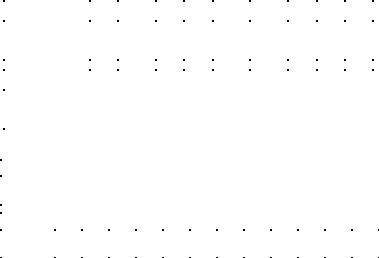
combinations. 16 bits can hold number up to 65,535. Word length is the term used to describe a word’s size in numbers of bits.
The memory of the computer can hold instructions that the control unit acts upon, and it can store binary numbers on which arithmetical operations can be carried out. A large number of business operations, and computer-based training in particular, do very little with numbers. They are mostly concerned with accepting as input, manipulating and presenting as output, large quantities of character information-names and addresses.
An address is the name of particular memory location or cell. Each memory location (word or byte) has it own unique address or number just a post office box. If one character is stored in a byte, there are 256 possible characters that the different bit patterns can represent. That is quite adequate for all alphabetic characters in upper and lower case, the number 0 to 9 and the various punctuation and special characters that are found on a typewriter keyboard. One widely used Coding convention is ASCII (American Standard Code for Information Interchange), pronounced as the two words «ass» and «key».
This is a part of the ASCII Code
|
Сharacter |
% |
E+ |
‘ |
( ) |
* |
+ |
, |
— |
. |
/ |
||||||||||||||||||
|
ASCII |
37 |
38 |
39 |
40 |
42 |
43 |
44 |
45 |
46 |
47 |
||||||||||||||||||
|
Code |
||||||||||||||||||||||||||||
|
Сharacter |
0 |
1 |
2 |
3 |
4 |
5 |
6 |
7 |
8 |
9 |
||||||||||||||||||
|
ASCII |
48 |
49 |
50 |
51 |
52 |
53 |
54 |
55 |
56 |
57 |
||||||||||||||||||
|
Code |
||||||||||||||||||||||||||||
|
Character |
A |
B |
C |
D |
E |
F |
G |
H |
I |
J |
K |
L |
M |
|||||||||||||||
|
ASCII |
65 |
66 |
67 |
68 |
69 |
70 |
71 |
72 |
73 |
74 |
75 |
76 |
77 |
|||||||||||||||
|
Code |
||||||||||||||||||||||||||||
|
Character |
N |
O |
P |
Q |
R |
S |
T |
U |
V |
W |
X |
Y |
Z |
|||||||||||||||
|
ASCII |
78 |
79 |
80 |
81 |
82 |
83 |
84 |
85 |
86 |
87 |
88 |
89 |
90 |
|||||||||||||||
|
Code |
Thus, if we wanted to hold FRANKLIN in part of the correct answer it could be held somewhere in memory (say location 5390 onwards) as the following ASCII codes:
19

|
Letter |
F |
R |
A |
N |
K |
L |
I |
N |
|
Code in |
70 |
82 |
65 |
78 |
75 |
76 |
73 |
78 |
|
memory |
||||||||
|
memory |
5390 |
5391 |
5392 |
5393 |
5394 |
5395 |
5396 |
5397 |
|
location |
Computer people generally refer to 1000 (1024 to be precise) byte as a kilobyte (kb) and a million bytes as a megabyte (mb). So, if somebody has a microcomputer with 640 k memory locations than means there are 640,000 locations in the machine.
Reasonable operations are mathematical and logical. Mathematical operations include arithmetical and algebraic operations. Arithmetical operations are addition, subtraction, multiplication, division, taking a square root, etc.; and algebraic operations are called raising to a power as well as differentiating and integrating.
Logical operations include comparing, selecting, sorting, matching, etc.
III. Translate these into your own language:
|
1. |
a set of marks and signs |
7. |
bytes |
||
|
2. |
circular beginning and ending with people |
8. |
bits are grouped |
||
|
3. |
we are conditioned to the decimal system |
9. can be manipulated |
|||
|
together |
|||||
|
4. |
base |
10. |
to hold instructions |
||
|
5. |
including these two digits |
11. memory location |
|||
|
6. |
the positions go up in powers of 2 |
12. to include |
|||
|
IV. Translate these into English: |
|||||
|
1. |
множество знаков |
7. десятичное число |
|||
|
2. |
число представляет |
8. |
запоминать, хранить в |
||
|
памяти |
|||||
|
3. |
учат работать с числами |
9. |
выполнять |
||
|
4. |
у каждого есть свое значение |
10. |
точно |
||
|
5. |
двоичная система исчисления |
11. |
разумные операции |
||
|
6. |
основной уровень |
V. Fill in the necessary words:
1. ….. is a set of marks or signs.
2. We are conditioned to the ….. ….. .
20
|
3. Computers work by using the ….. ….. |
where the ….. |
is 2. |
|
|
4. The ….. |
of a computer consists of a large number of locations. |
5.A ….. is the smallest part of information.
6.A byte consists of 8 ….. .
|
7. The memory of the computer can ….. |
instructions. |
|||||
|
8. Computer people generally |
….. ….. |
1 000 bytes as a kilobyte. |
||||
|
VI. Fill in the prepositions: |
||||||
|
1. Nowadays school children are taught to handle numbers ….. |
dif- |
|||||
|
ferent bases. |
||||||
|
2. |
….. their most basic level, computers only understand the language |
|||||
|
of electricity. |
||||||
|
3. |
Instead of going ….. |
in powers of ten, the positions go ….. |
….. |
|||
|
powers of 2. |
||||||
|
4. |
Each position can be set ….. |
0 or 1. |
||||
|
5. |
Bits are grouped ….. |
units. |
||||
|
6. The memory can store binary numbers ….. |
which arithmetical op- |
|||||
|
erations can be carried ….. . |
VII. Give the correct definitions of the following terms:
|
a) information c) |
bit |
e) word |
g) reasonable operation |
|
b) binary system d) |
byte |
f) address |
VIII. Answer the following questions: 1. What is information?
2.Do computers work by using binary or decimal system?
3.What is the base of the binary system?
4.How can any information be represented?
5.What is the ASC II Code?
IX. Write you last name in letters and codes in memory and in memory locations, use the ASC II Code.
X. Retell the text.
21
Соседние файлы в предмете [НЕСОРТИРОВАННОЕ]
- #
- #
- #
- #
- #
- #
- #
- #
- #
- #
- #
-
#1
Isn’t it wrong to use «is» if I have two nouns? I wanted to start with «are» but there is an indefinite article and a singular word so I wasn’t sure.
«There is a computer and a TV in my room.»
From «English File» by Christina Koenig.
-
#2
Native speakers tend to go with «There’s» at the start of such a sentence. We use «There are» before a plural noun, more than one plural noun, or a plural noun followed by singular nouns.
There’s a computer and a table in my room.
There are two computers in my room.
There are two computers and three tables in my room.
There are two computers, a table and a desk in my room.
«There is» sounds unnatural to me in the first. That’s probably why we contract it to «There’s» which, in BrE at least, can serve as «There is» and «There are».
-
#3
Isn’t it wrong to use «is» if I have two nouns? I wanted to start with «are» but there is an indefinite article and a singular word so I wasn’t sure.
«There is a computer and a TV in my room.» From «English File» by Christina Koenig.
What does your book say?
-
#4
Native speakers tend to go with «There’s» at the start of such a sentence. We use «There are» before a plural noun, more than one plural noun, or a plural noun followed by singular nouns.
There’s a computer and a table in my room.
There are two computers in my room.
There are two computers and three tables in my room.
There are two computers, a table and a desk in my room.«There is» sounds unnatural to me in the first. That’s probably why we contract it to «There’s» which, in BrE at least, can serve as «There is» and «There are».
I would probably use «There’s» when speaking in all those example but in written English I would use «There is» or «There are» as appropriate. I would never use «There’s» in writing except as reported speech.
-
#5
It doesn’t have answers. I mean answer key.
-
#6
Native speakers tend to go with «There’s» at the start of such a sentence. We use «There are» before a plural noun, more than one plural noun, or a plural noun followed by singular nouns.
There’s a computer and a table in my room.
There are two computers in my room.
There are two computers and three tables in my room.
There are two computers, a table and a desk in my room.«There is» sounds unnatural to me in the first. That’s probably why we contract it to «There’s» which, in BrE at least, can serve as «There is» and «There are».
Sorry, but I didn’t understand your last sentence. You said «There’s» can serve as «There is» and «There are.» Do you mean in the first sentence «There is» serves as «There are»?
-
#7
Do you mean in the first sentence «There is» serves as «There are»?
Yes — but only «there’s» is natural.
Last edited: Nov 23, 2020
-
#8
It’s There’s, not There is that can function as There are.
Oh, interesting. It’s not even mentioned in the book. That’s why it’s not wrong to use it when we have two or more nouns. Because usually it is «There is an apple on the table» but «There are two apples on the table.» But as it functions as «there are» I can also say «There’s two apples on the table.»
-
#9
You probably won’t find it in any book. It was emsr2d2’s explanation of why, in a sentence like «There ___ a computer and a TV in my room», we can use There are or There‘s, but we don’t normally use There is.
I see. If I have a singular word «There is a cat in the room.» Is «there’s» more natural than «there is»? or a plural noun: «There are cats in the room.» Is «There’re» more natural than «There are.» In such cases too. I am asking because I was completing exercises in «English Grammar in Context» by Simon Clarke. There are no short forms.
-
#10
Contractions are always more common than full forms in normal speech.
There’re is not a recognised contraction in writing, though it’s common enough in speech.
The form that is ‘correct’ in those exercises is the form Mr Clarke accepts.
Yes, I understand that but is the case emsr2d2 was talking about the only case when «there is» is unnatural? In speech as you said «There’s» is more common but in writing?
Is for example, «There is a woman in the hall» less natural than «There’s a woman in the hall.» In writing.
-
#11
I see. If I have a singular word «There is a cat in the room.» Is «there’s» more natural than «there is»? or a plural noun: «There are cats in the room.» Is «There’re» more natural than «There are.» In such cases too. I am asking because I was completing exercises in «English Grammar in Context» by Simon Clarke. There are no short forms.
Well, then:
Conversationally, many or most English speakers often say there’s instead of there are simply because it rolls off the tongue much more easily.
It’s a shortcut. That doesn’t make it strictly grammatical, and it doesn’t make there are incorrect or unnatural.
So in conversation you can say either «There’s a computer and a TV» or «There are a computer and a TV.» Both are fine.
Personally, I go both ways conversationally, depending on how careful I’m being at the moment, and in writing I use there are.
It’s you’re choice, as long as you know the difference. (And it looks like you do.)
Since your exercise doesn’t offer contractions (short forms), I’d use are, not is.
Last edited by a moderator: Nov 24, 2020
-
#12
Yes, I understand that but is the case emsr2d2 was talking about the only case when «there is» is unnatural? In speech, as you said, «There’s» is more common but what about in writing?
Is, for example, «There is a woman in the hall» less natural than «There’s a woman in the hall« no full stop here in writing?
Note my corrections, mainly to your punctuation, above.
-
#13
I don’t want to make things complicated, but may I ask a question?
There’s a computer and a table in my room.
Would you use ‘was’ or ‘were’ if the sentence above were in the past?
There was a computer and a table in my room.
There were a computer and a table in my room.
-
#14
Would you use ‘was’ or ‘were’ if the sentence above were in the past?
was
-
#15
Would it be safe to say that ‘the principle of proximity’ is applied there? My guess is that you choose to say «was» because of the following «a».
-
#16
Would it be safe to say that ‘the principle of proximity’ is applied there? My guess is that you choose to say «was» because of the following «a».
Yes, some might say that.
I’m not a fan of the proximity principle. I don’t think it explains anything. If you’re going to say that I chose to use was because the complement NP is singular (I assume that’s what you mean), then yes, okay, but since this is a there-be sentence, I’d analyse the logic of the sentence as a conjunction of two propositions:
P1: There is a computer
conj.: and
P2: [there is] a TV
-
#17
Yes — but only «there’s» is natural.
It’s There’s, not There is that can function as There are.
Would you two please clarify what you’re saying? Do you mean to say:?
There’s a computer and a TV. :tick:
There is a computer and a TV. :cross:
Really?
-
#18
So how about this?:
There are a computer and a TV. 
-
#19
There are a computer and a TV in my room is fine.
Euch! I’m really surprised you’d think so.
Could other native speakers please offer their judgements?
Last edited: Nov 24, 2020
-
#20
I too would use was there but of course that doesn’t make were incorrect. Learners are well-advised to use there were in the plural even though native speakers often do not.
Last edited: Nov 24, 2020
Lesson 2: What is a Computer?
/en/computerbasics/about-this-tutorial/content/
What is a computer?
A computer is an electronic device that manipulates information, or data. It has the ability to store, retrieve, and process data. You may already know that you can use a computer to type documents, send email, play games, and browse the Web. You can also use it to edit or create spreadsheets, presentations, and even videos.
Watch the video below to learn about different types of computers.
Looking for the old version of this video? You can still view it here.
Hardware vs. software
Before we talk about different types of computers, let’s talk about two things all computers have in common: hardware and software.
- Hardware is any part of your computer that has a physical structure, such as the keyboard or mouse. It also includes all of the computer’s internal parts, which you can see in the image below.
- Software is any set of instructions that tells the hardware what to do and how to do it. Examples of software include web browsers, games, and word processors.
Everything you do on your computer will rely on both hardware and software. For example, right now you may be viewing this lesson in a web browser (software) and using your mouse (hardware) to click from page to page. As you learn about different types of computers, ask yourself about the differences in their hardware. As you progress through this tutorial, you’ll see that different types of computers also often use different types of software.
What are the different types of computers?
When most people hear the word computer, they think of a personal computer such as a desktop or laptop. However, computers come in many shapes and sizes, and they perform many different functions in our daily lives. When you withdraw cash from an ATM, scan groceries at the store, or use a calculator, you’re using a type of computer.
Desktop computers
Many people use desktop computers at work, home, and school. Desktop computers are designed to be placed on a desk, and they’re typically made up of a few different parts, including the computer case, monitor, keyboard, and mouse.
Laptop computers
The second type of computer you may be familiar with is a laptop computer, commonly called a laptop. Laptops are battery-powered computers that are more portable than desktops, allowing you to use them almost anywhere.
Tablet computers
Tablet computers—or tablets—are handheld computers that are even more portable than laptops. Instead of a keyboard and mouse, tablets use a touch-sensitive screen for typing and navigation. The iPad is an example of a tablet.
Servers
A server is a computer that serves up information to other computers on a network. For example, whenever you use the Internet, you’re looking at something that’s stored on a server. Many businesses also use local file servers to store and share files internally.
Other types of computers
Many of today’s electronics are basically specialized computers, though we don’t always think of them that way. Here are a few common examples.
- Smartphones: Many cell phones can do a lot of things computers can do, including browsing the Internet and playing games. They are often called smartphones.
- Wearables: Wearable technology is a general term for a group of devices—including fitness trackers and smartwatches—that are designed to be worn throughout the day. These devices are often called wearables for short.
- Game consoles: A game console is a specialized type of computer that is used for playing video games on your TV.
- TVs: Many TVs now include applications—or apps—that let you access various types of online content. For example, you can stream video from the Internet directly onto your TV.
PCs and Macs
Personal computers come in two main styles: PC and Mac. Both are fully functional, but they have a different look and feel, and many people prefer one or the other.
PCs
This type of computer began with the original IBM PC that was introduced in 1981. Other companies began creating similar computers, which were called IBM PC Compatible (often shortened to PC). Today, this is the most common type of personal computer, and it typically includes the Microsoft Windows operating system.
Macs
The Macintosh computer was introduced in 1984, and it was the first widely sold personal computer with a graphical user interface, or GUI (pronounced gooey). All Macs are made by one company (Apple), and they almost always use the Mac OS X operating system.
/en/computerbasics/basic-parts-of-a-computer/content/


